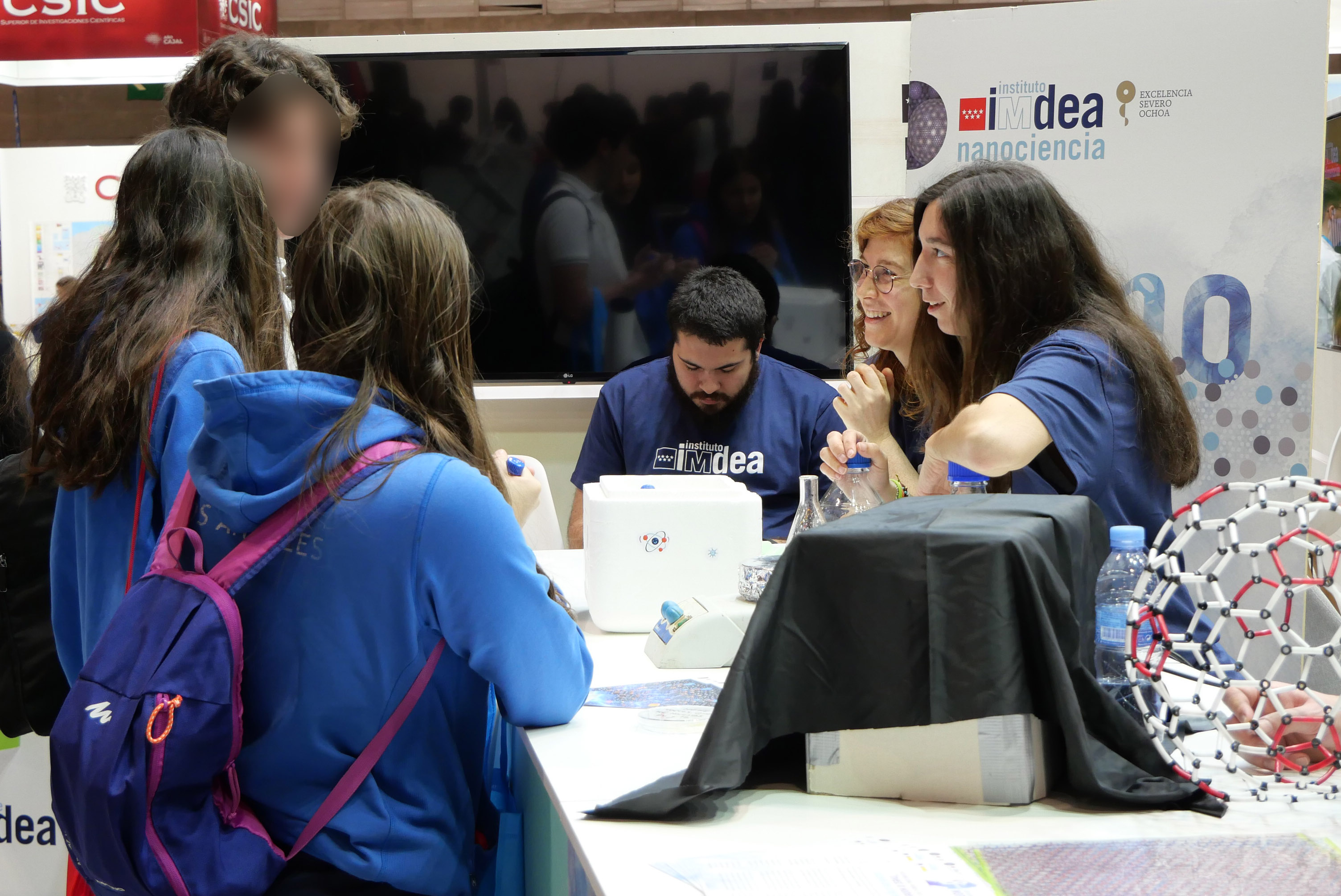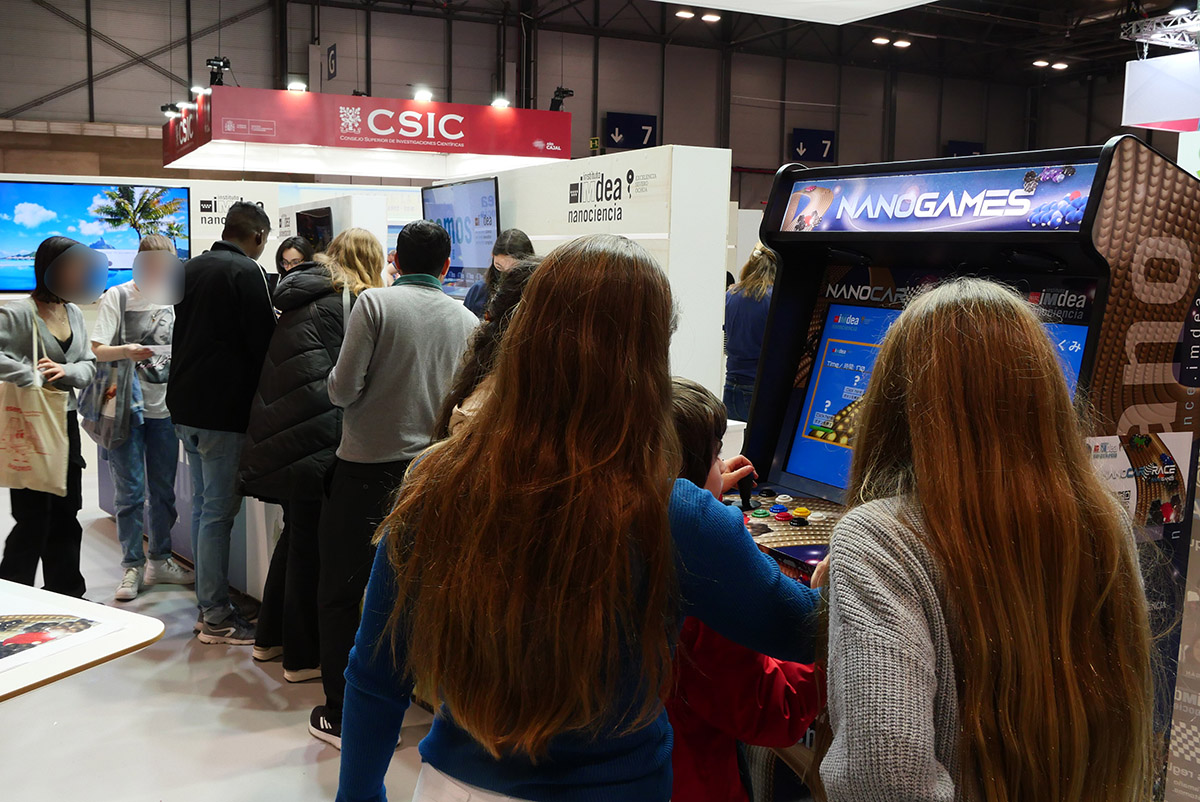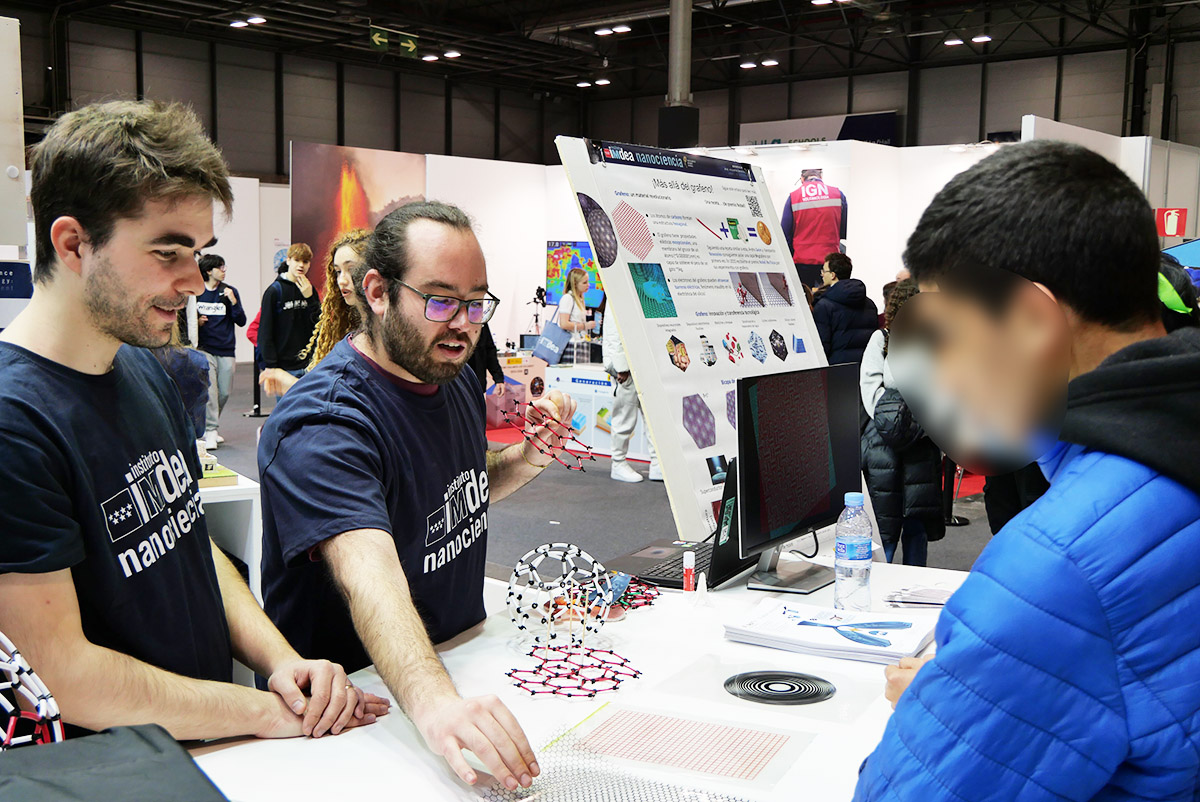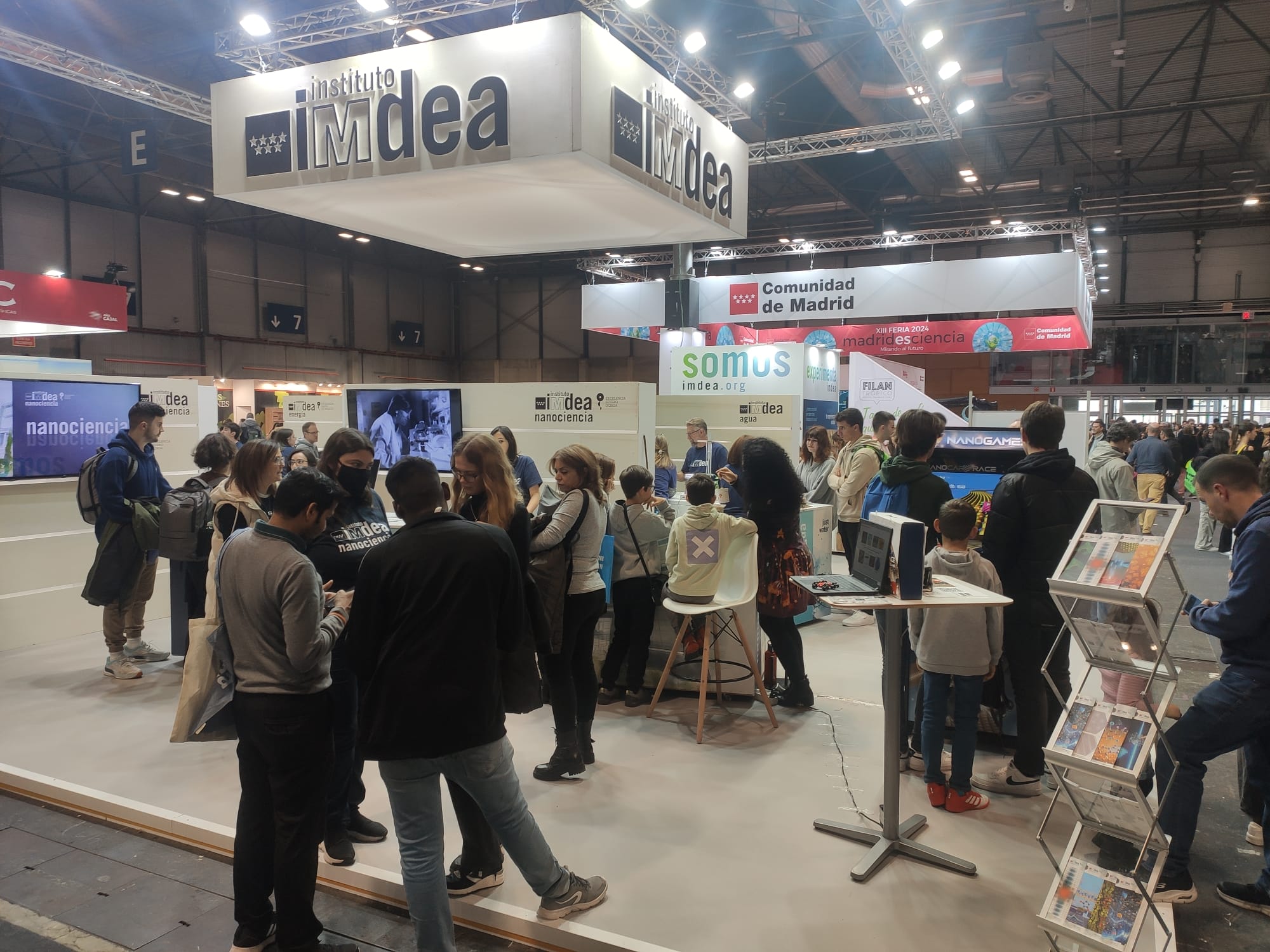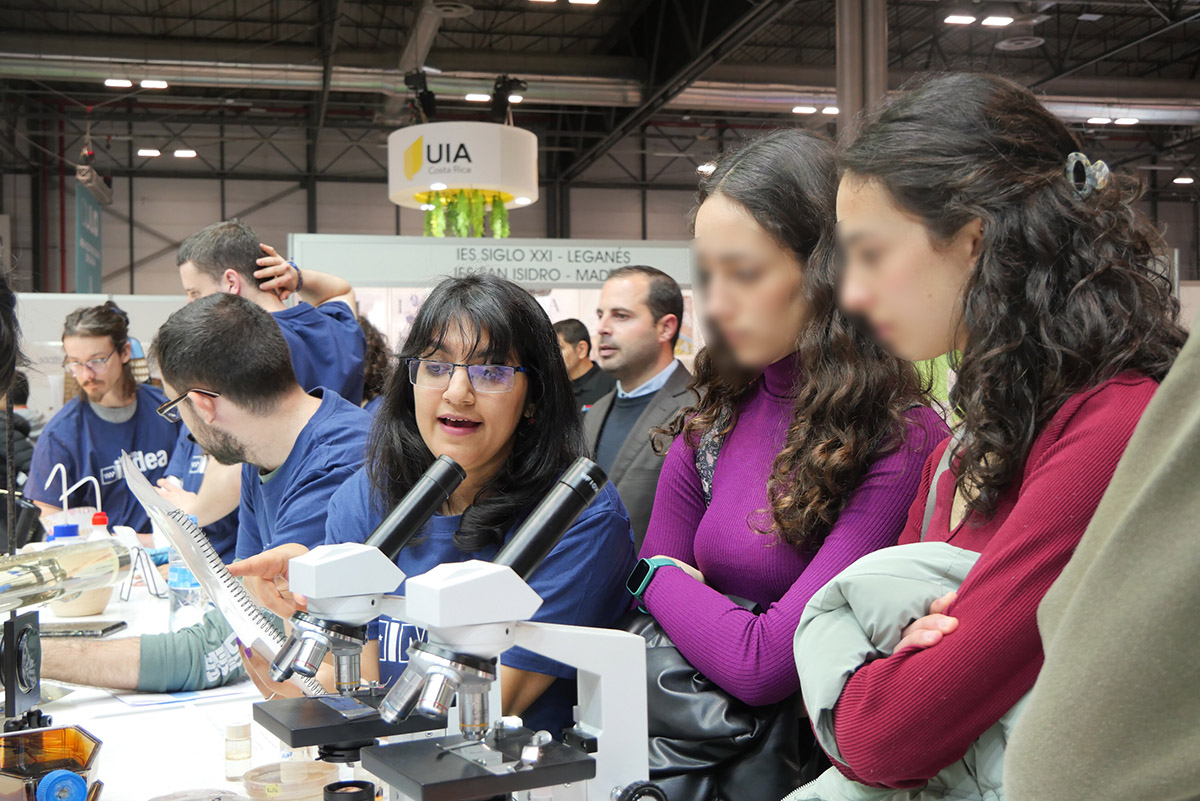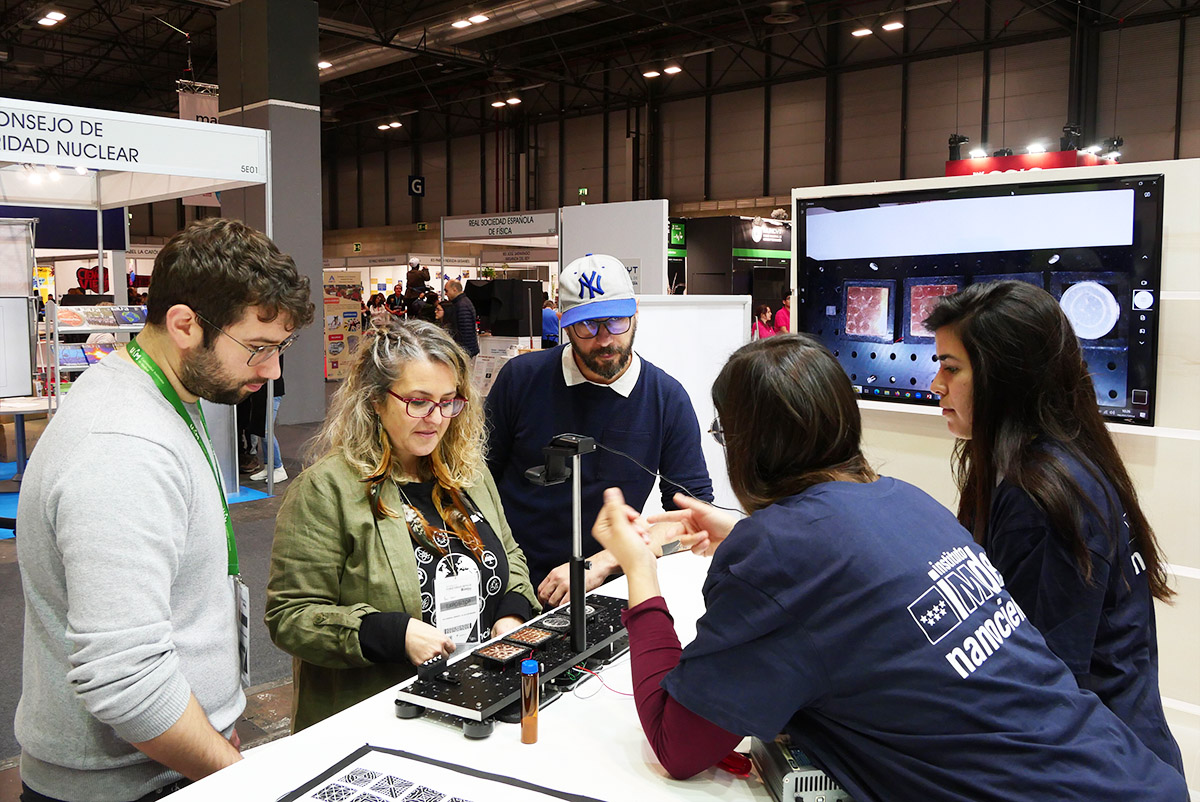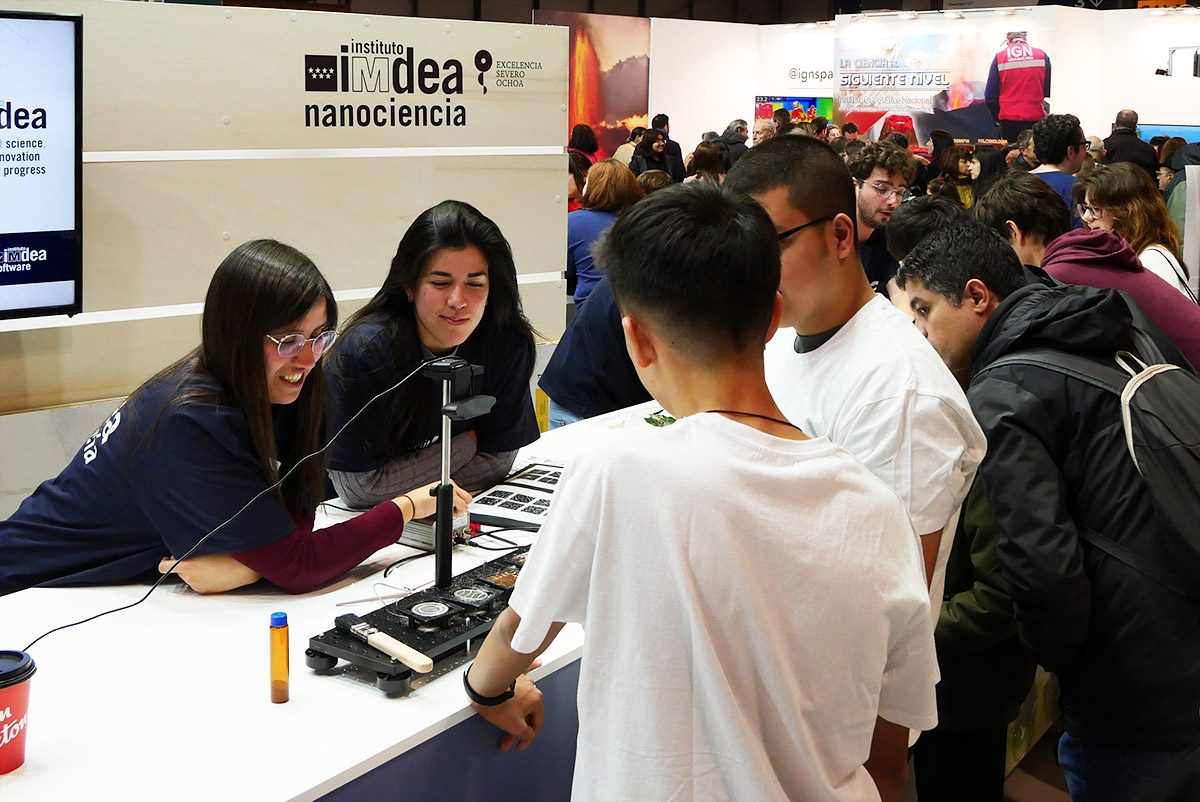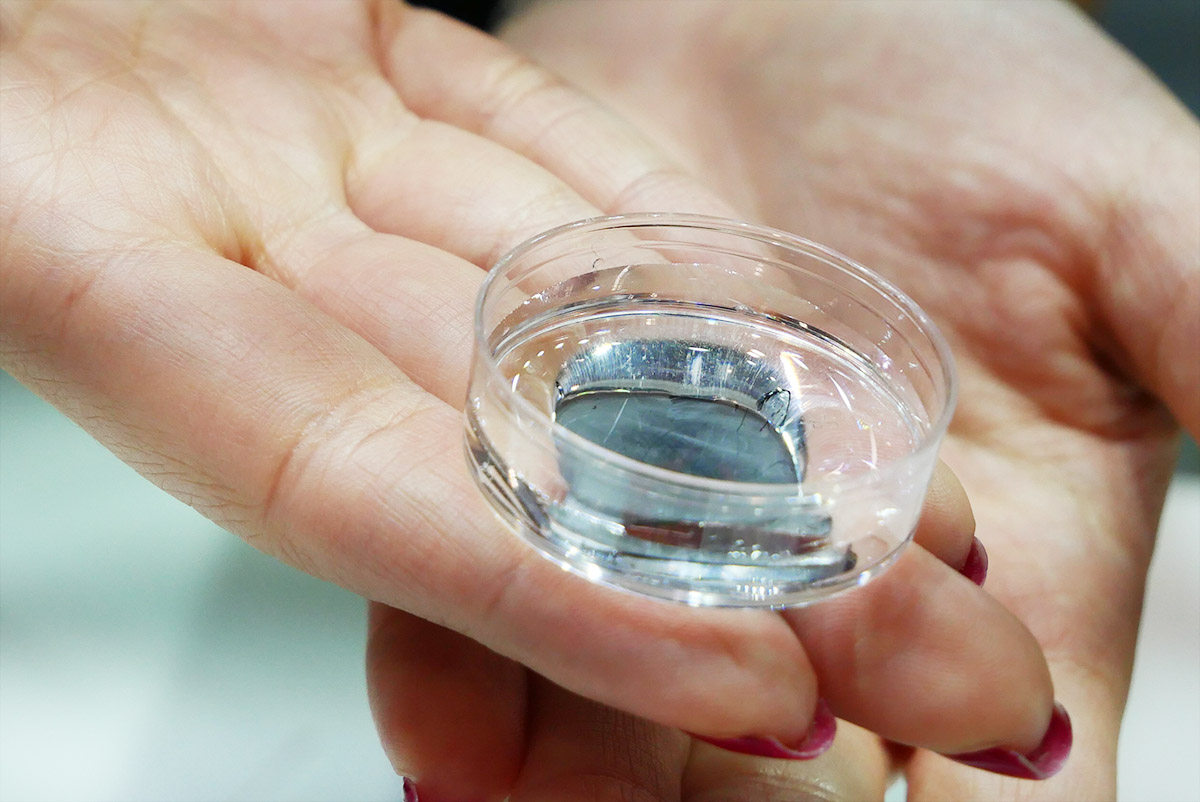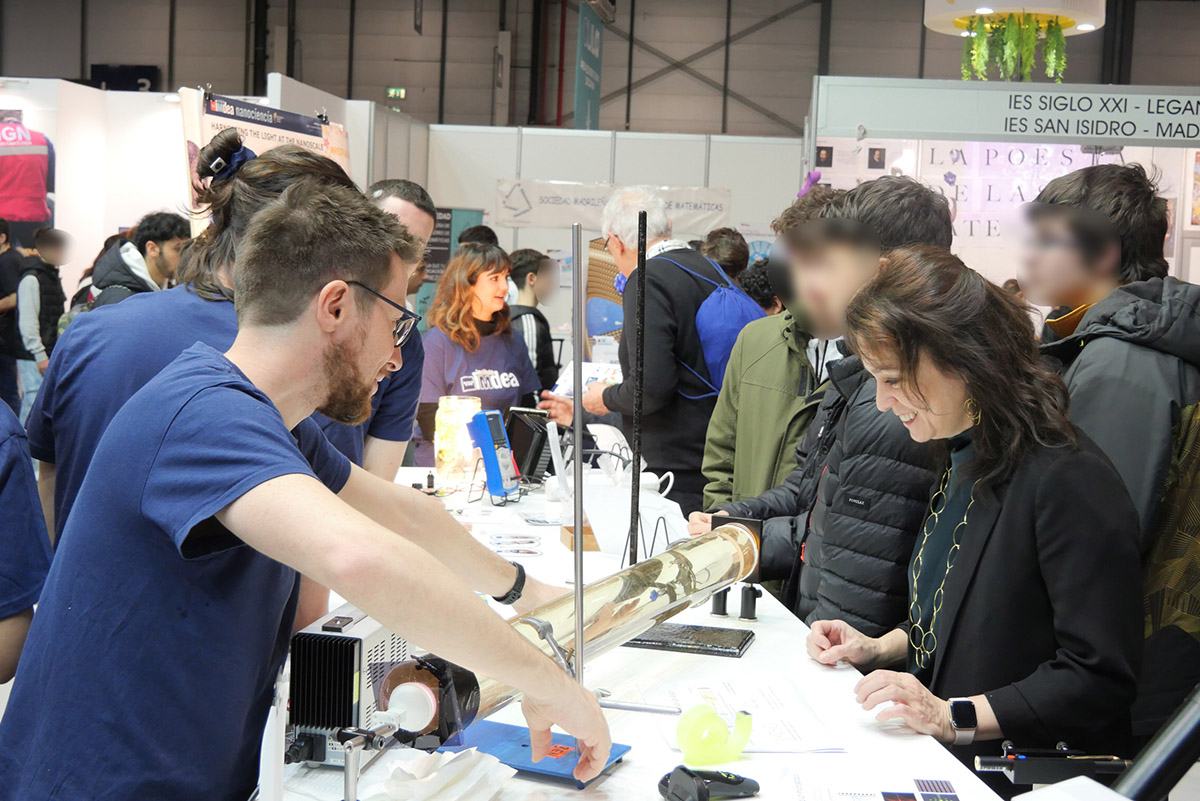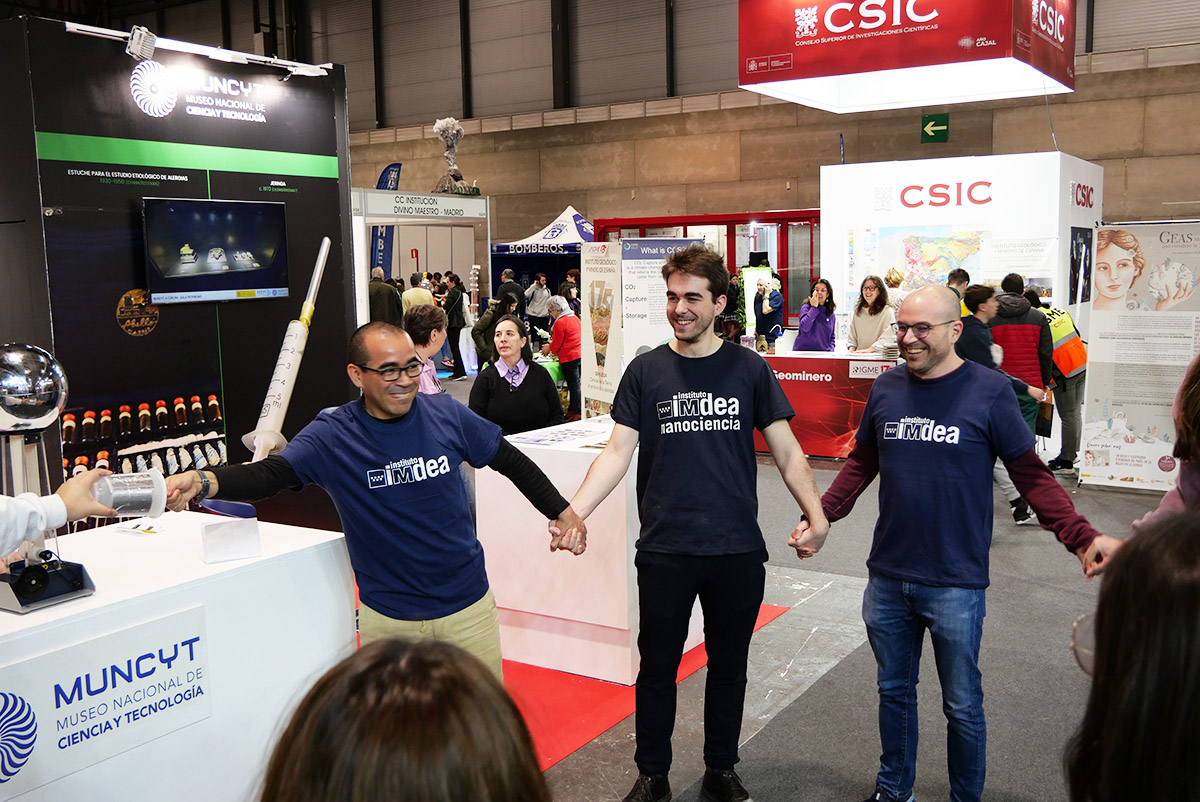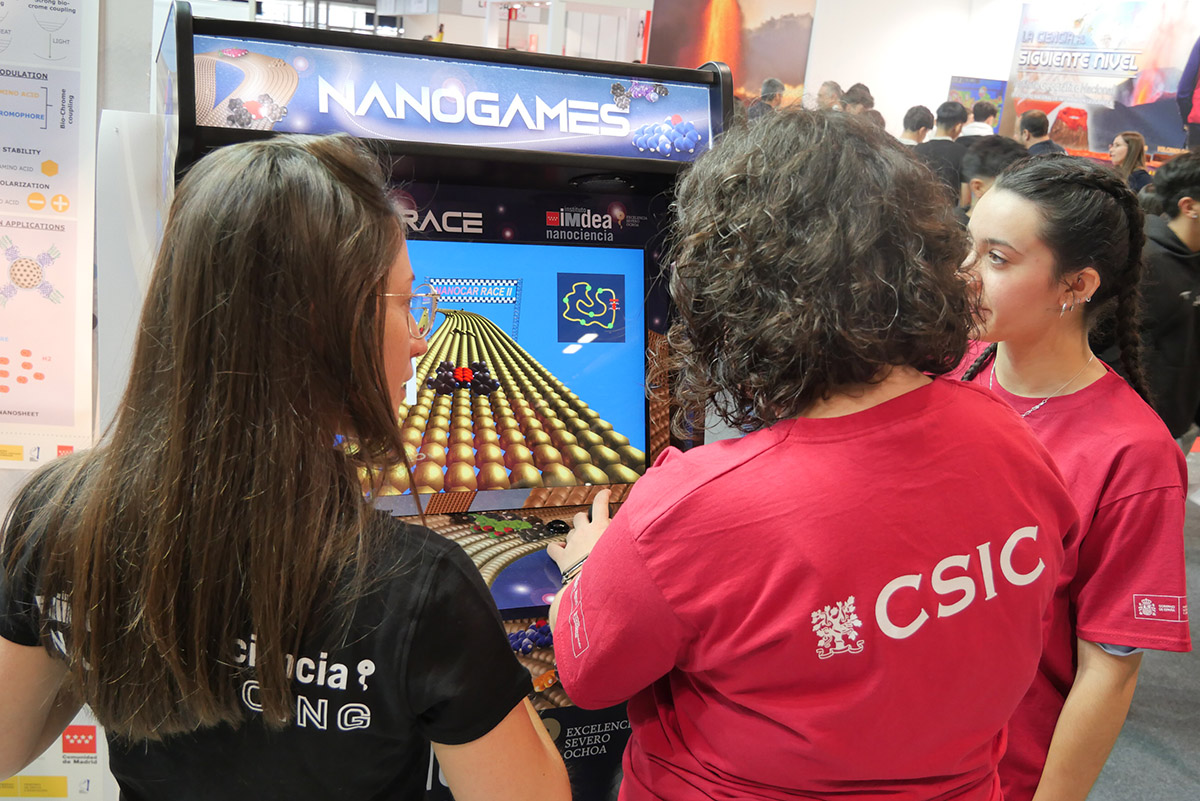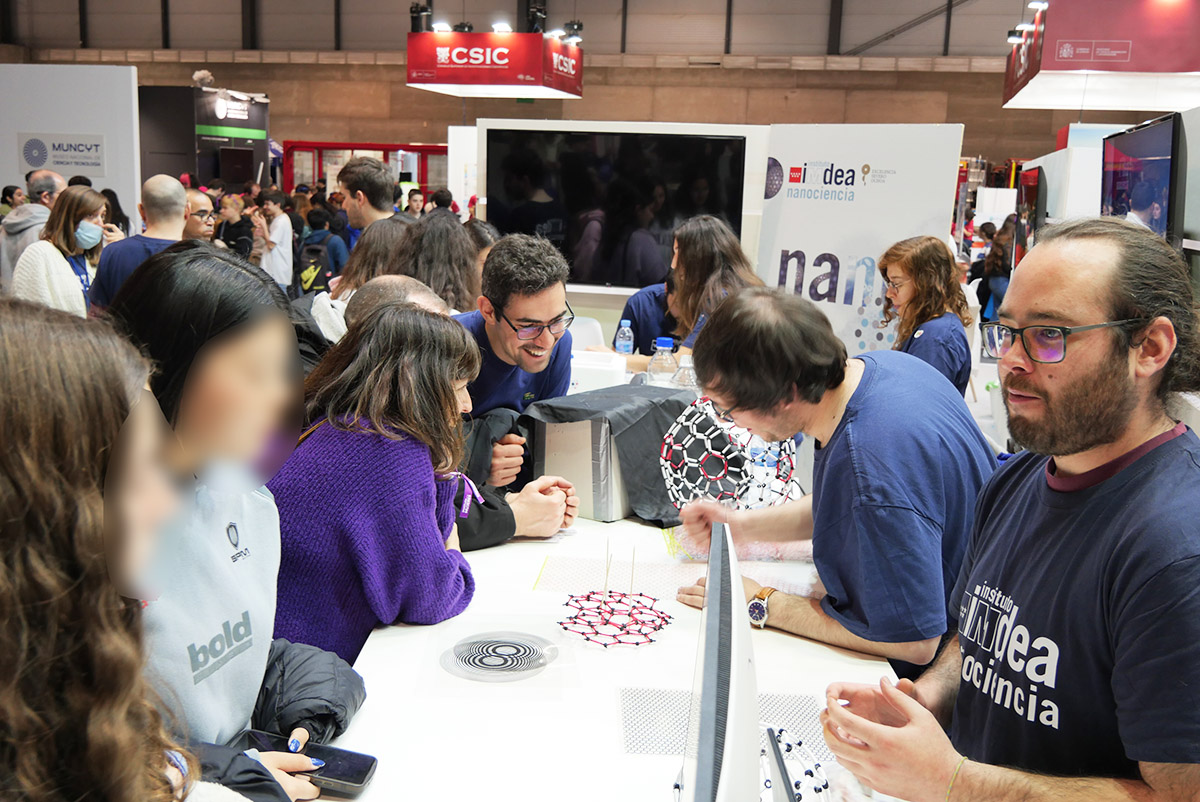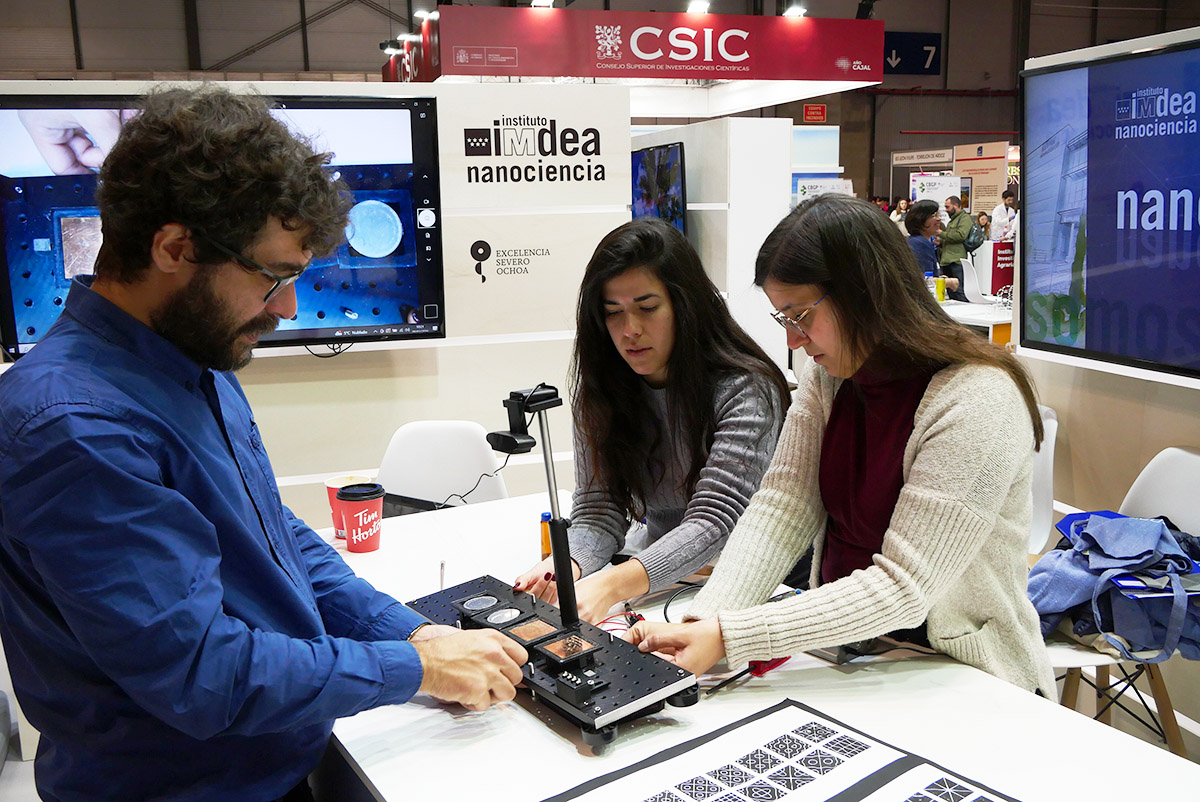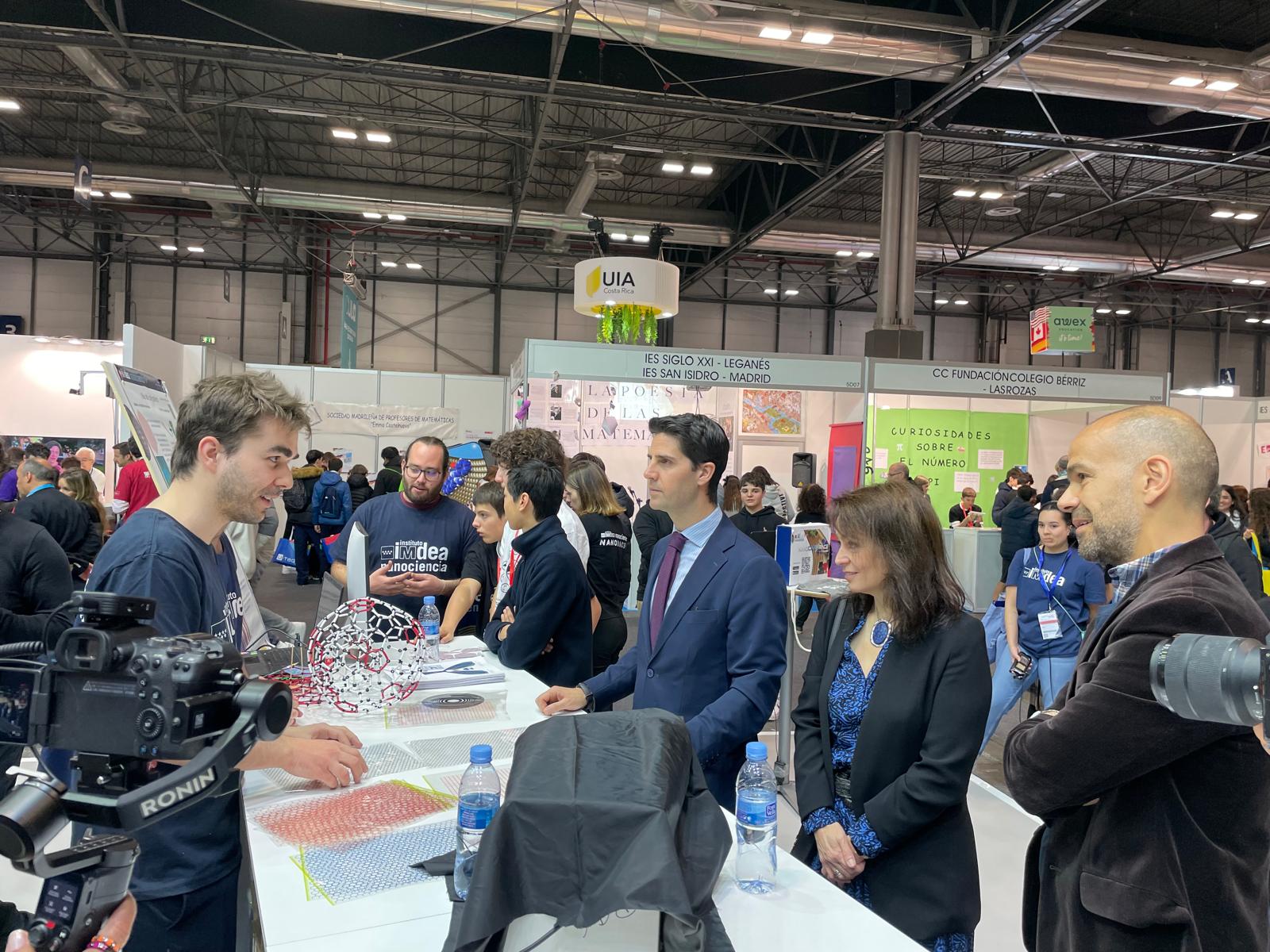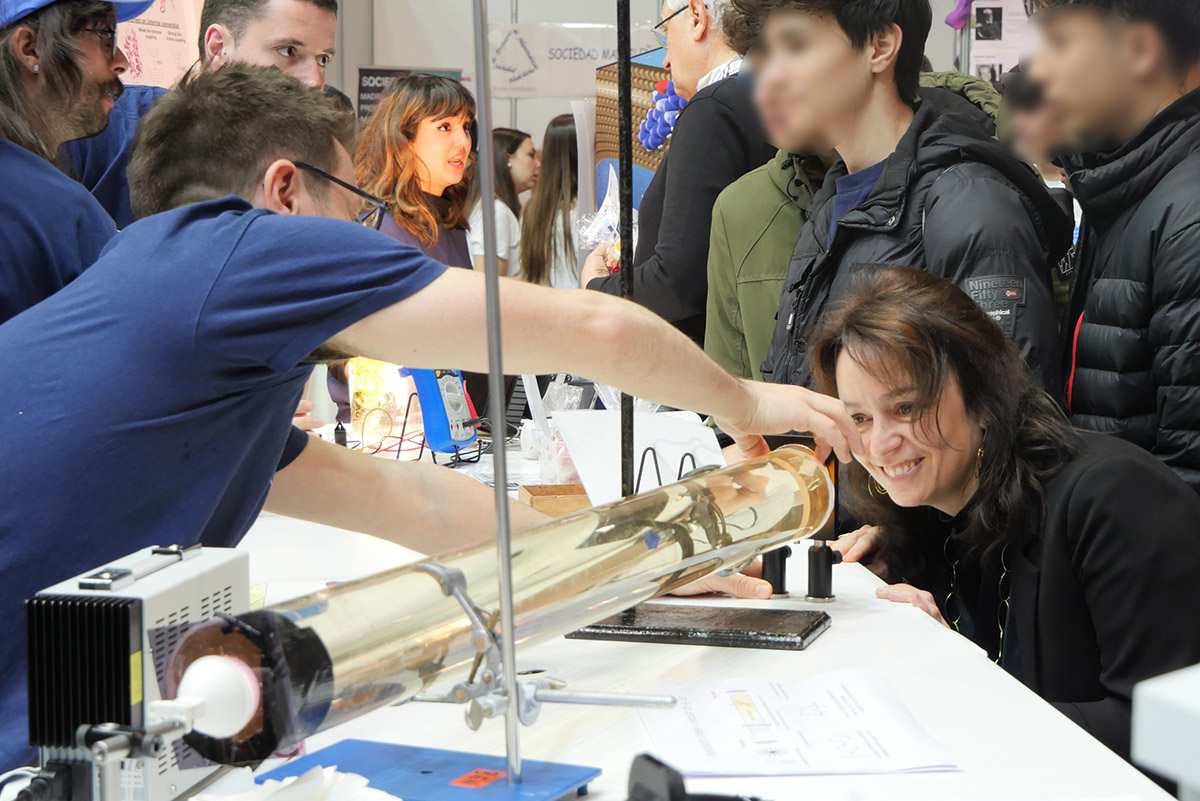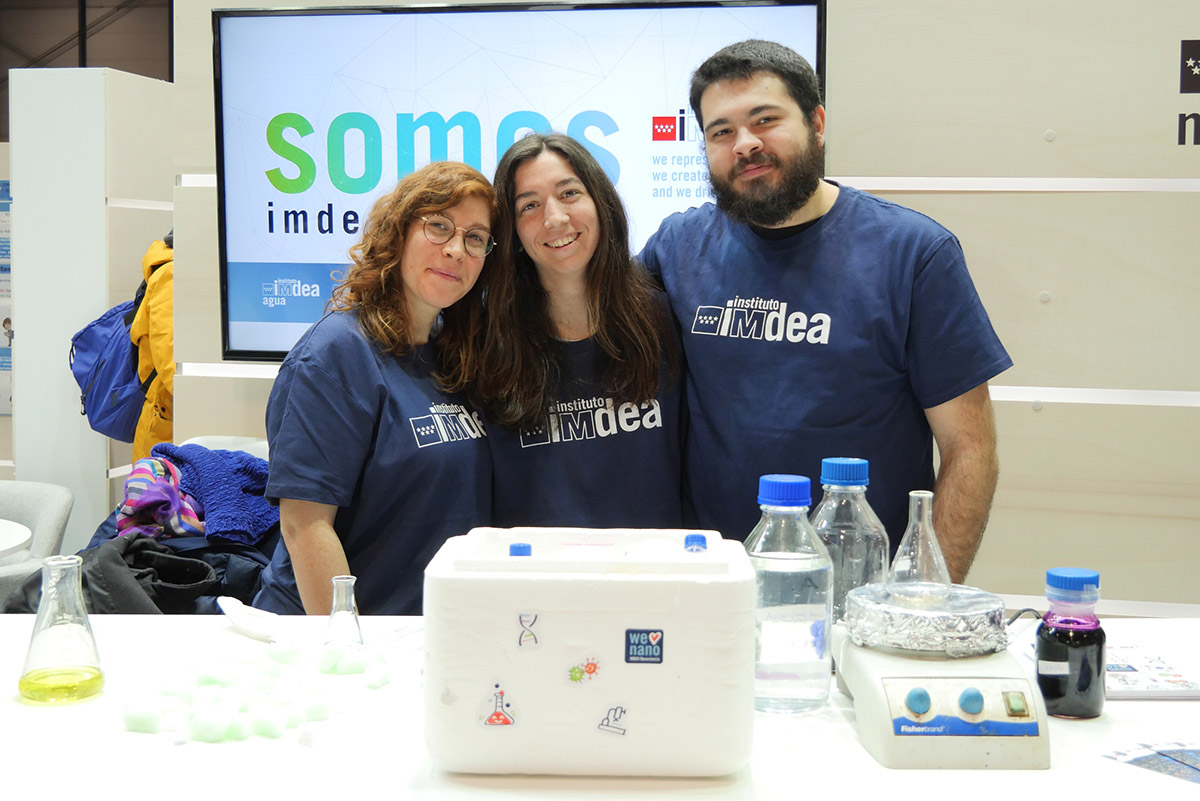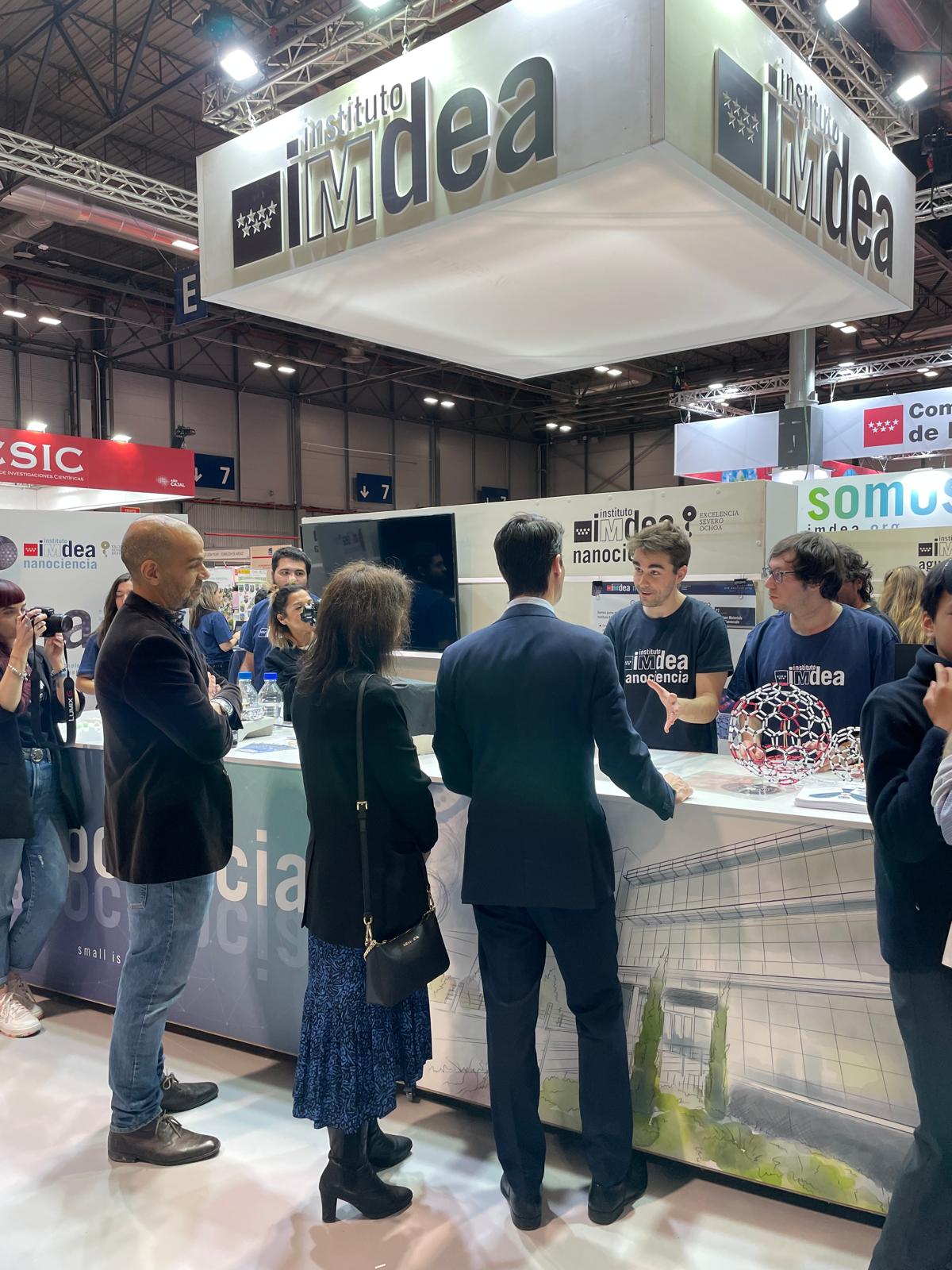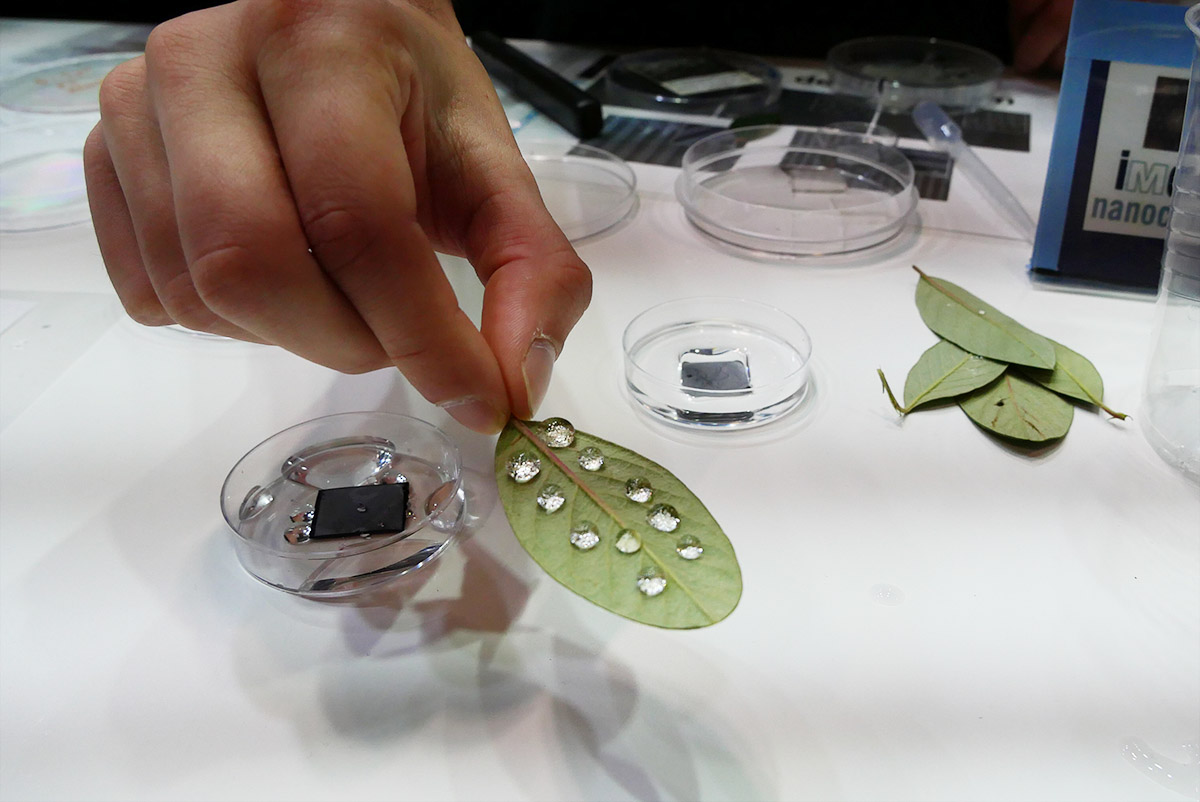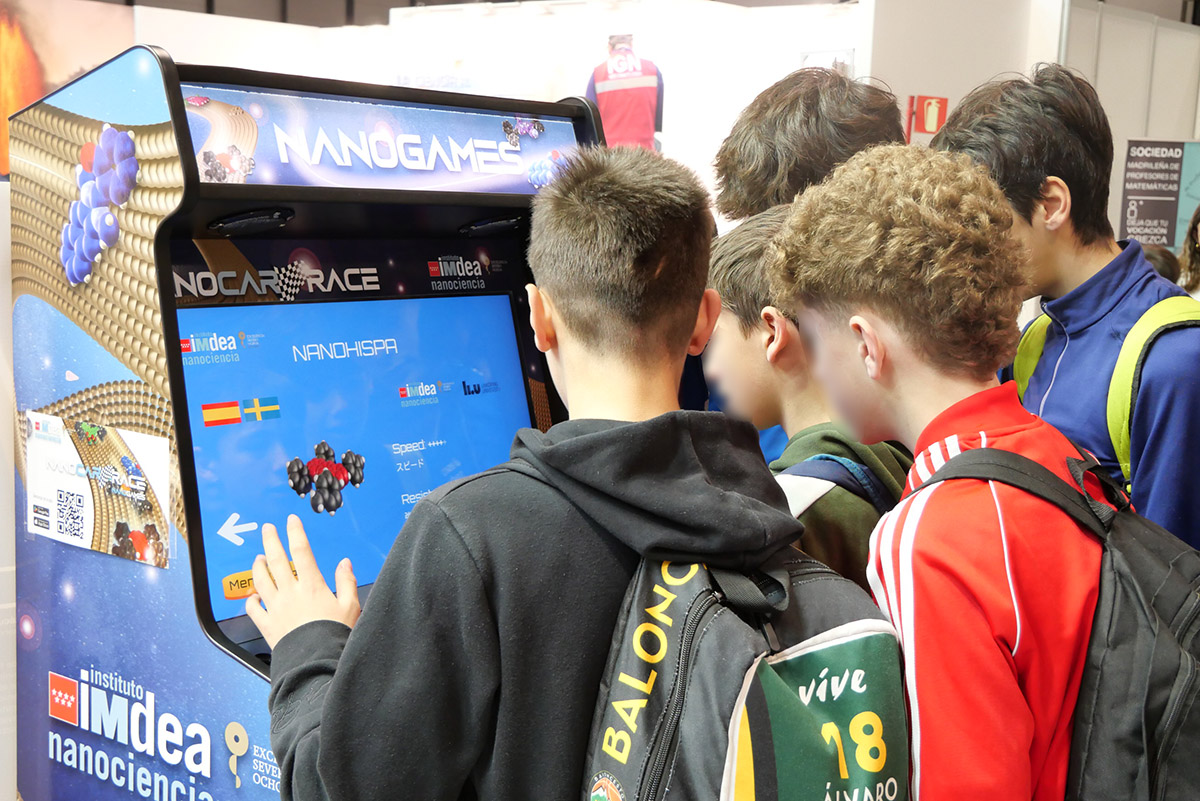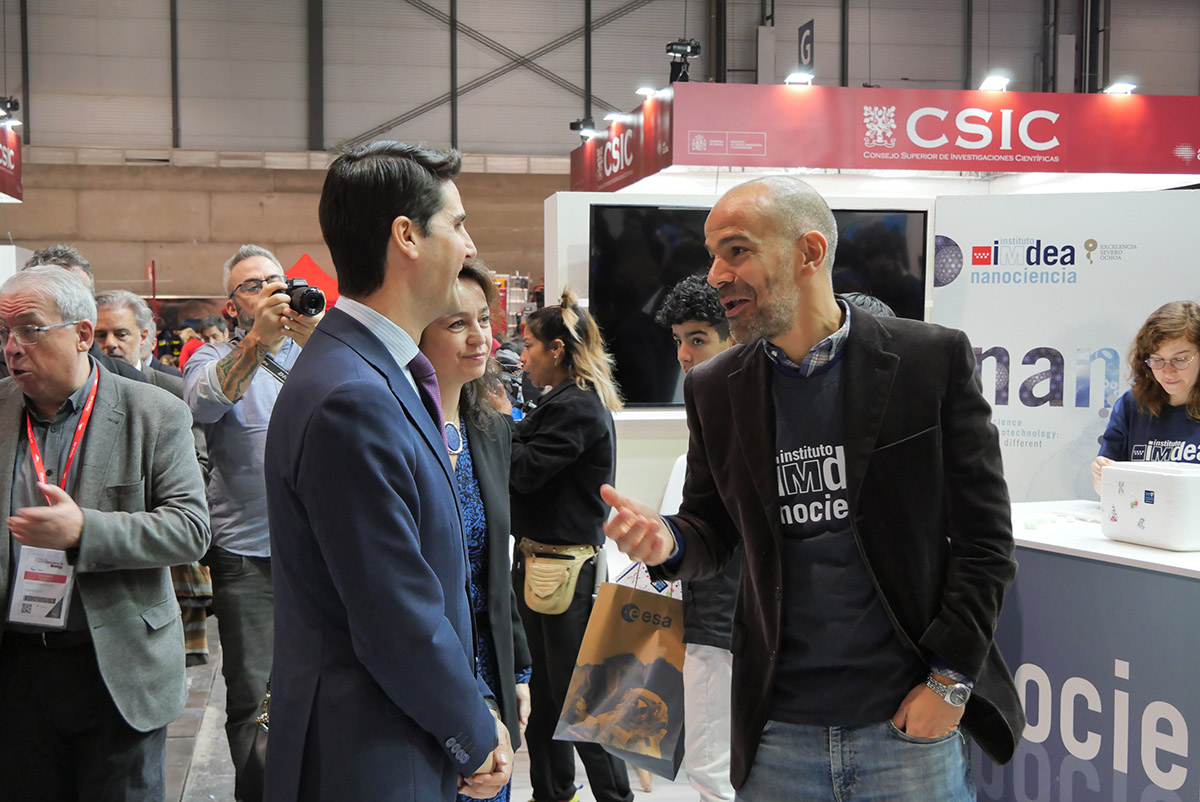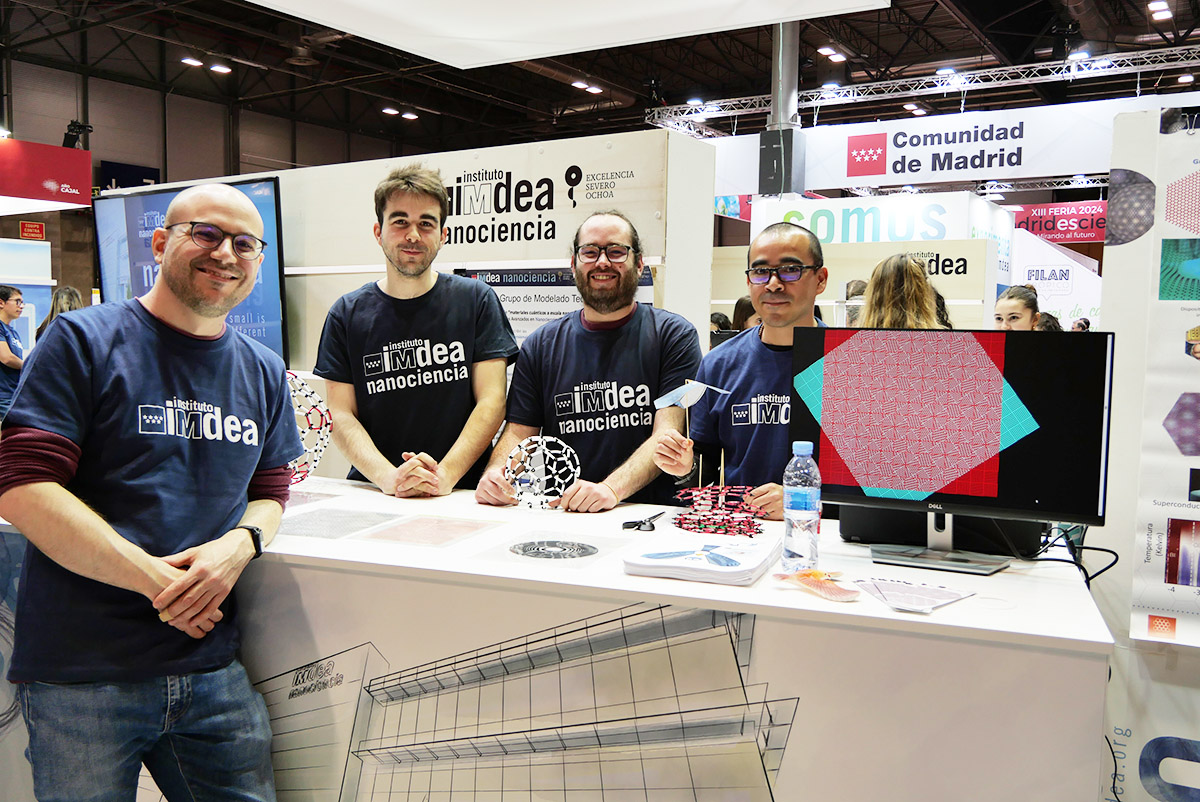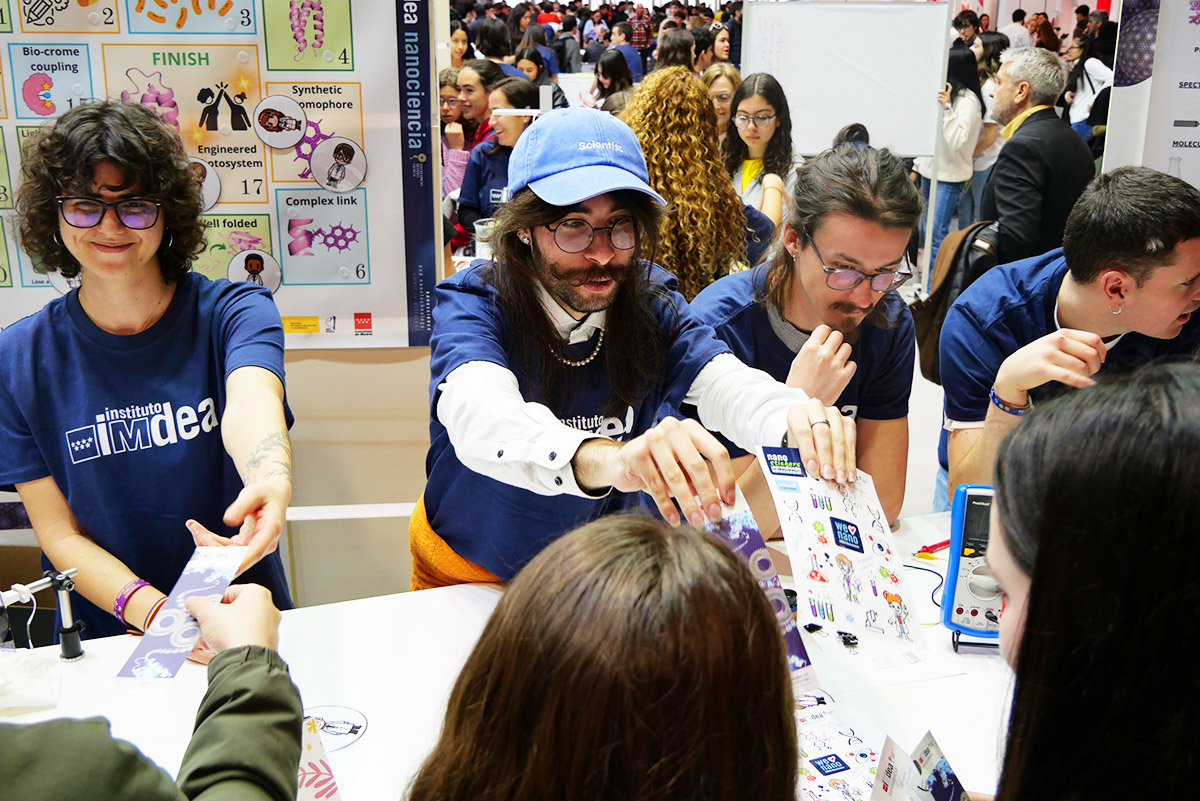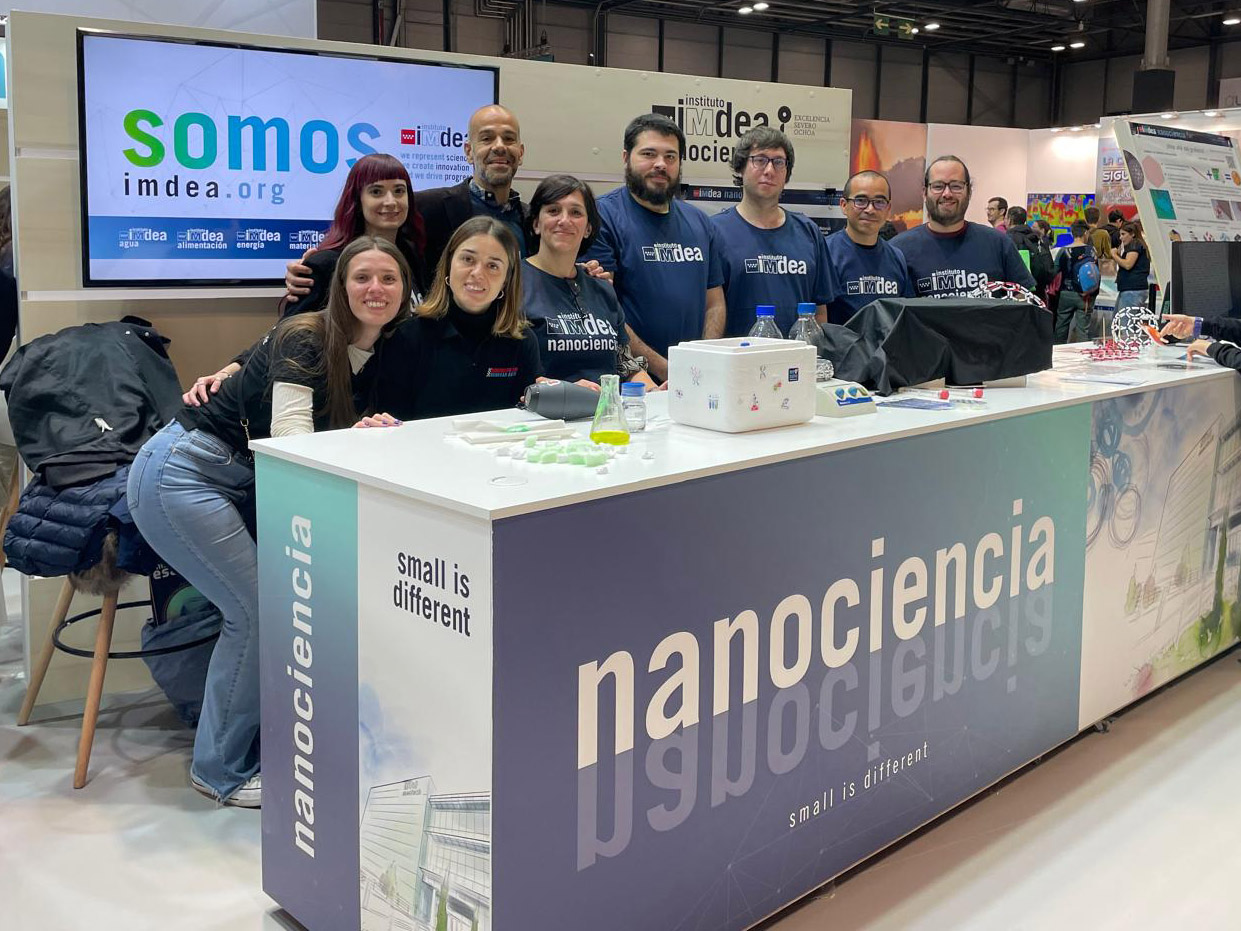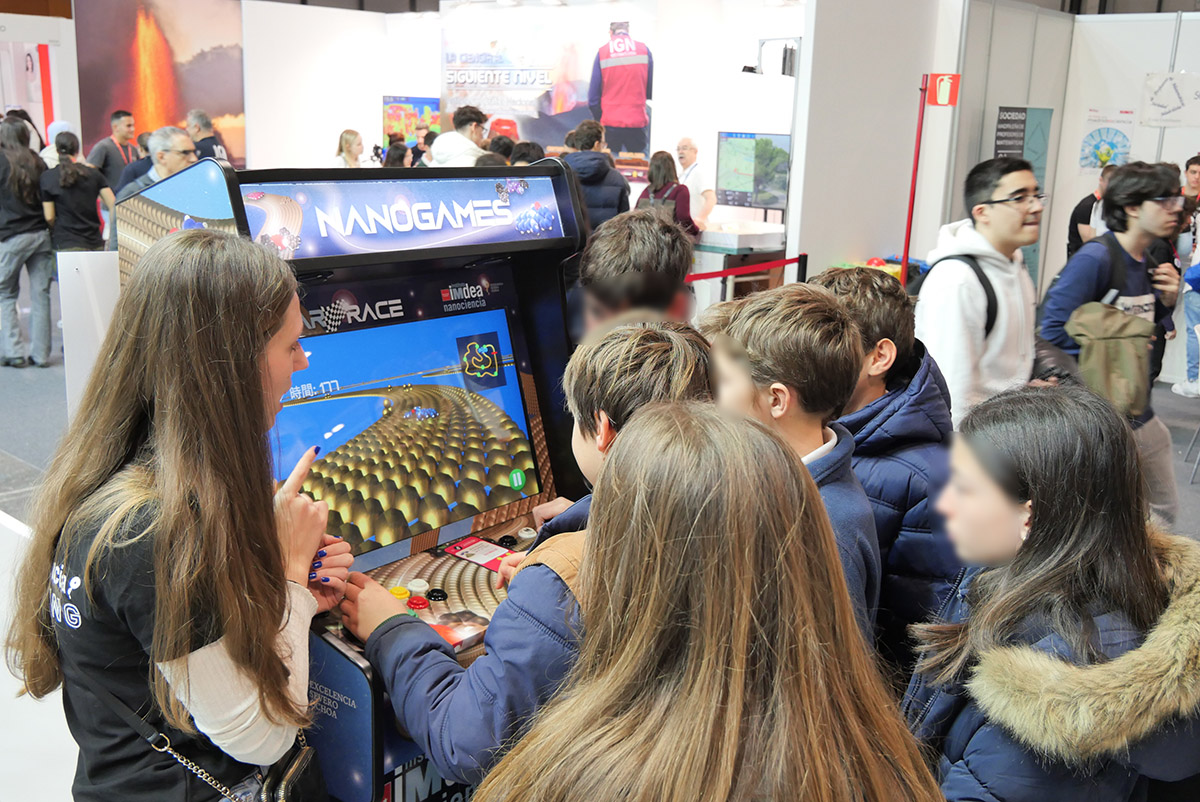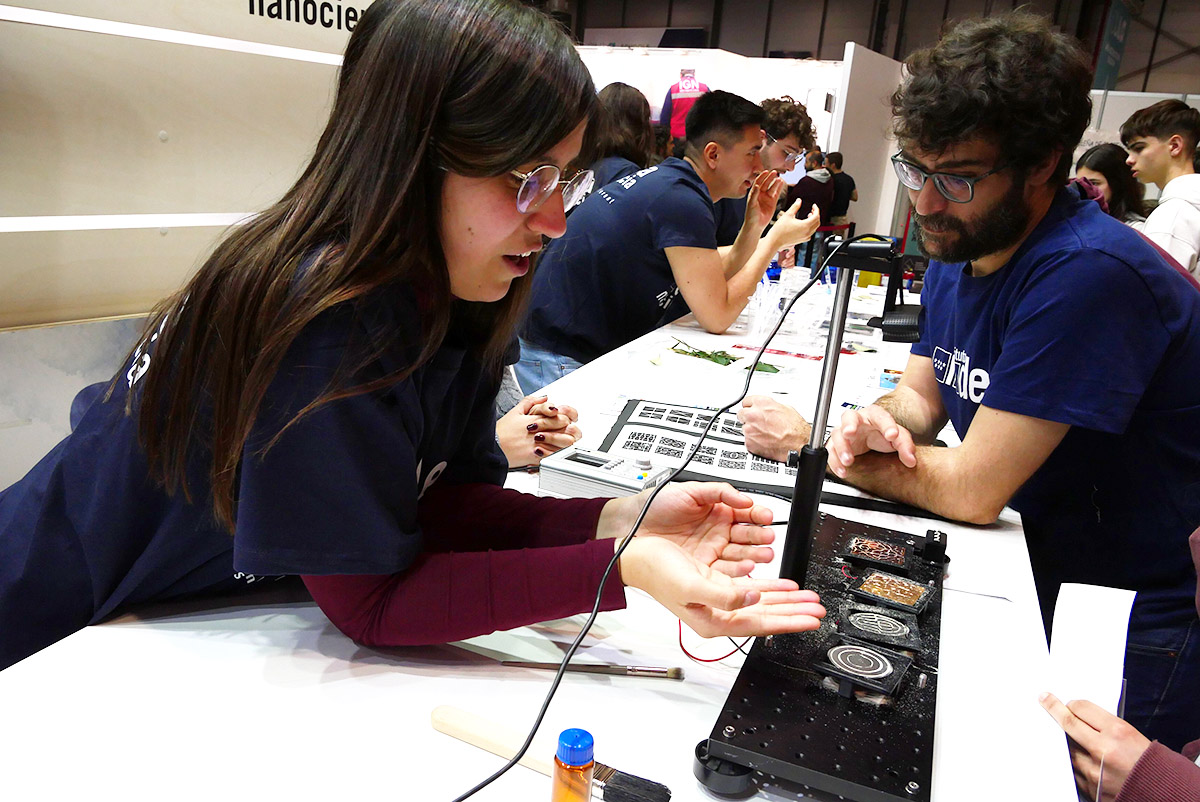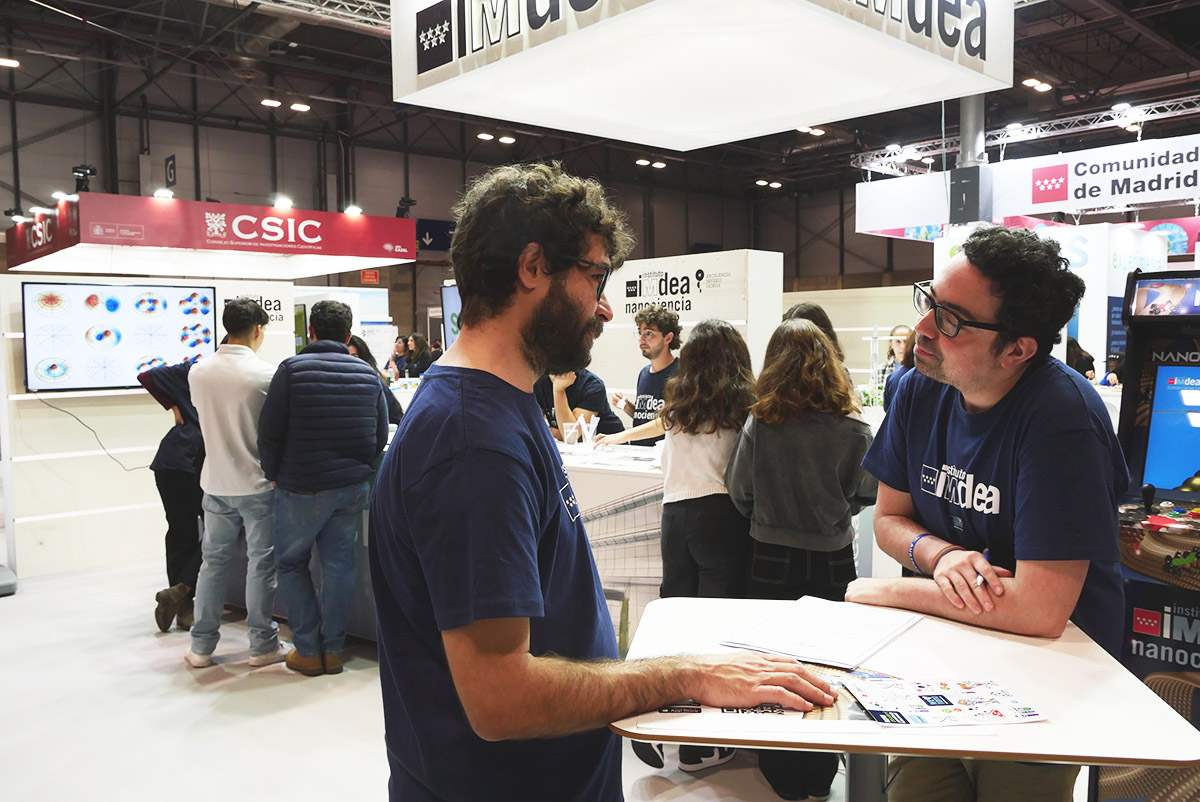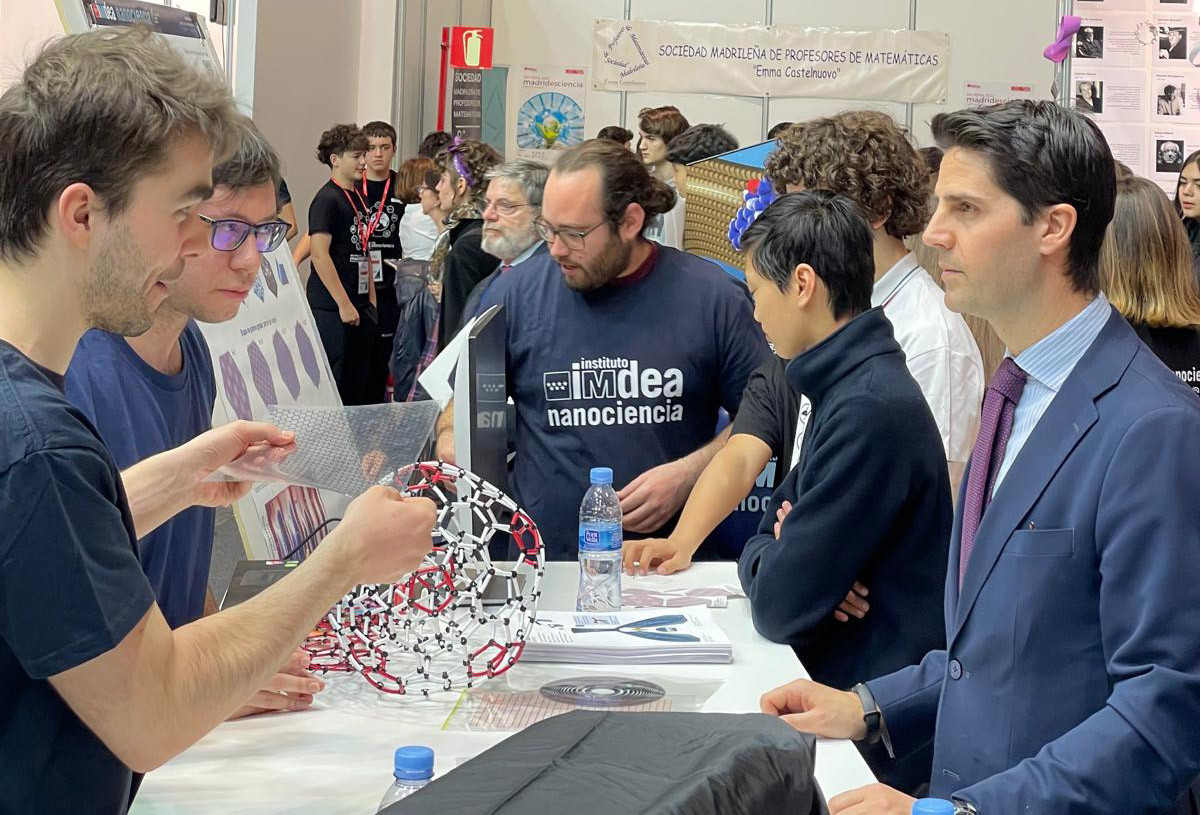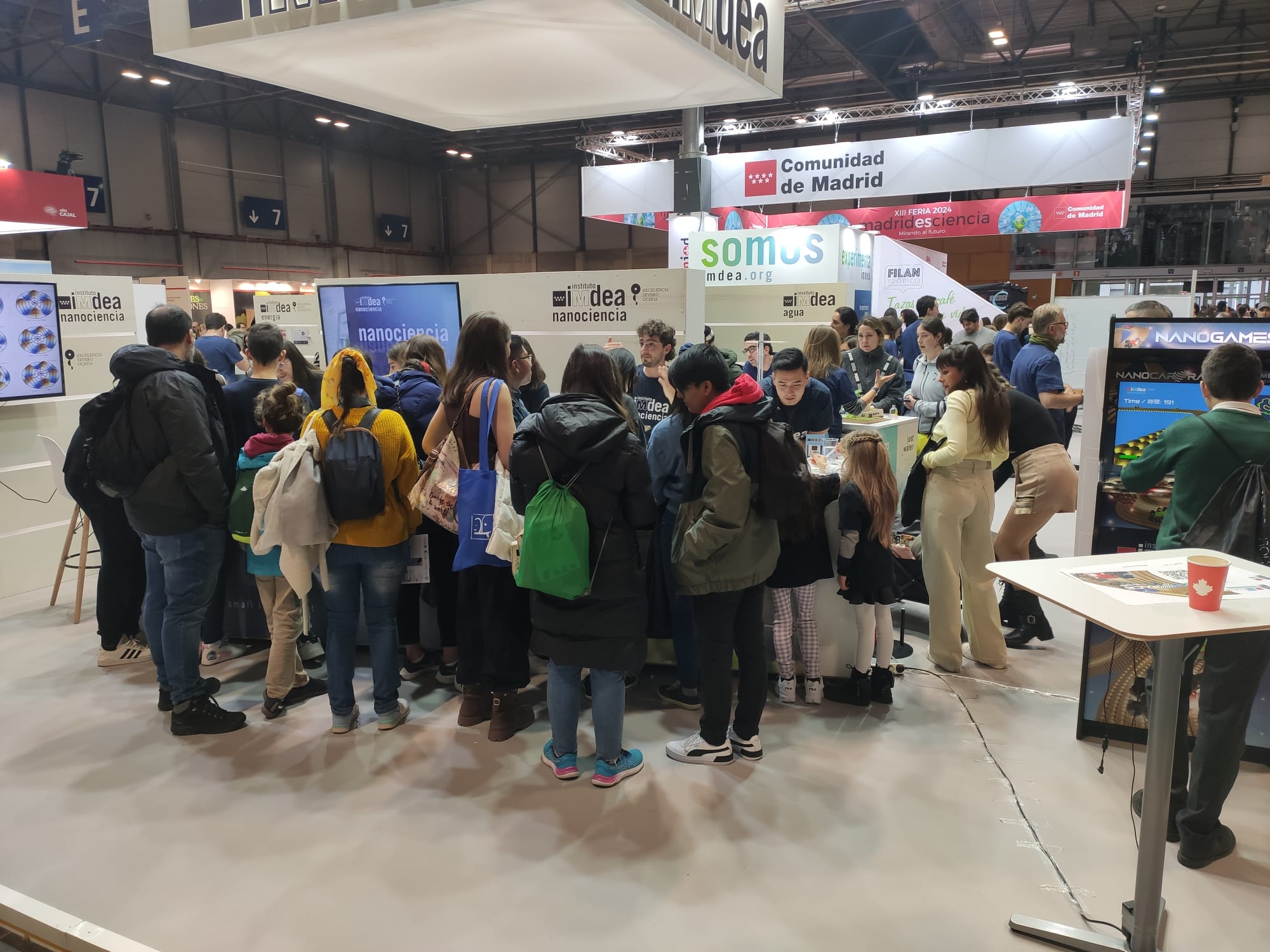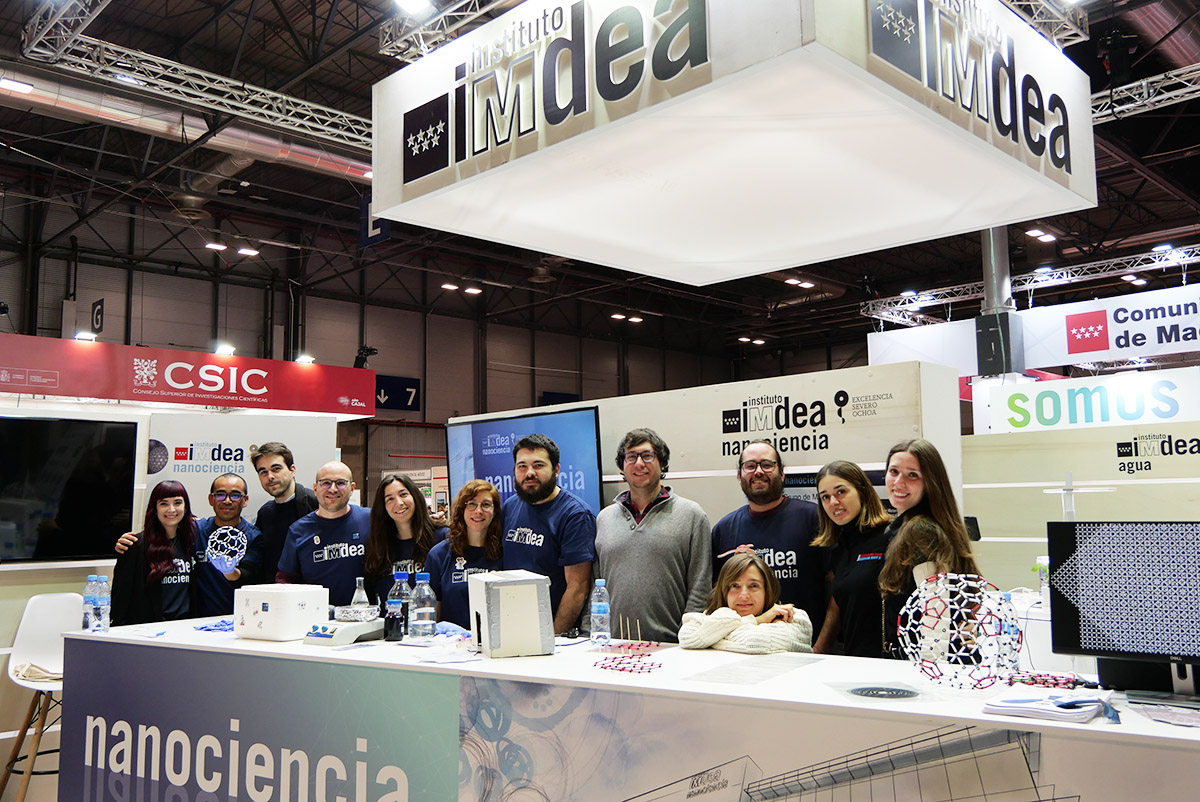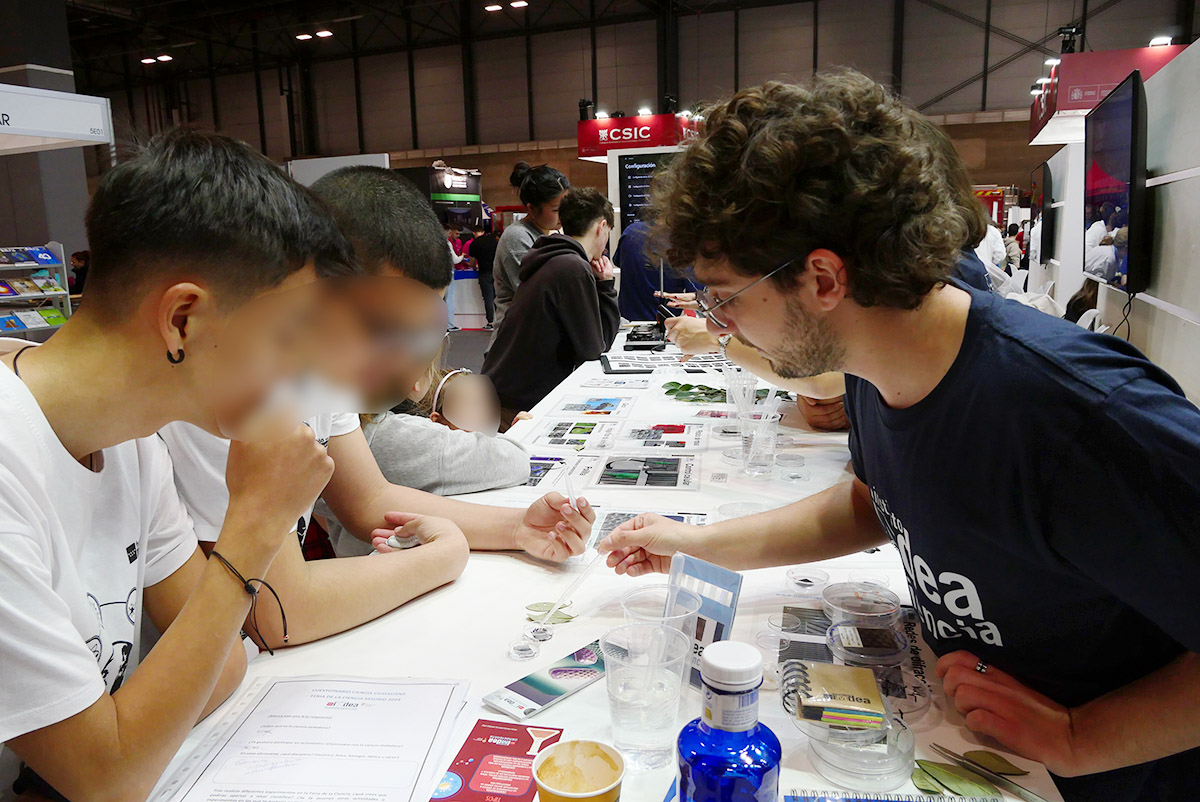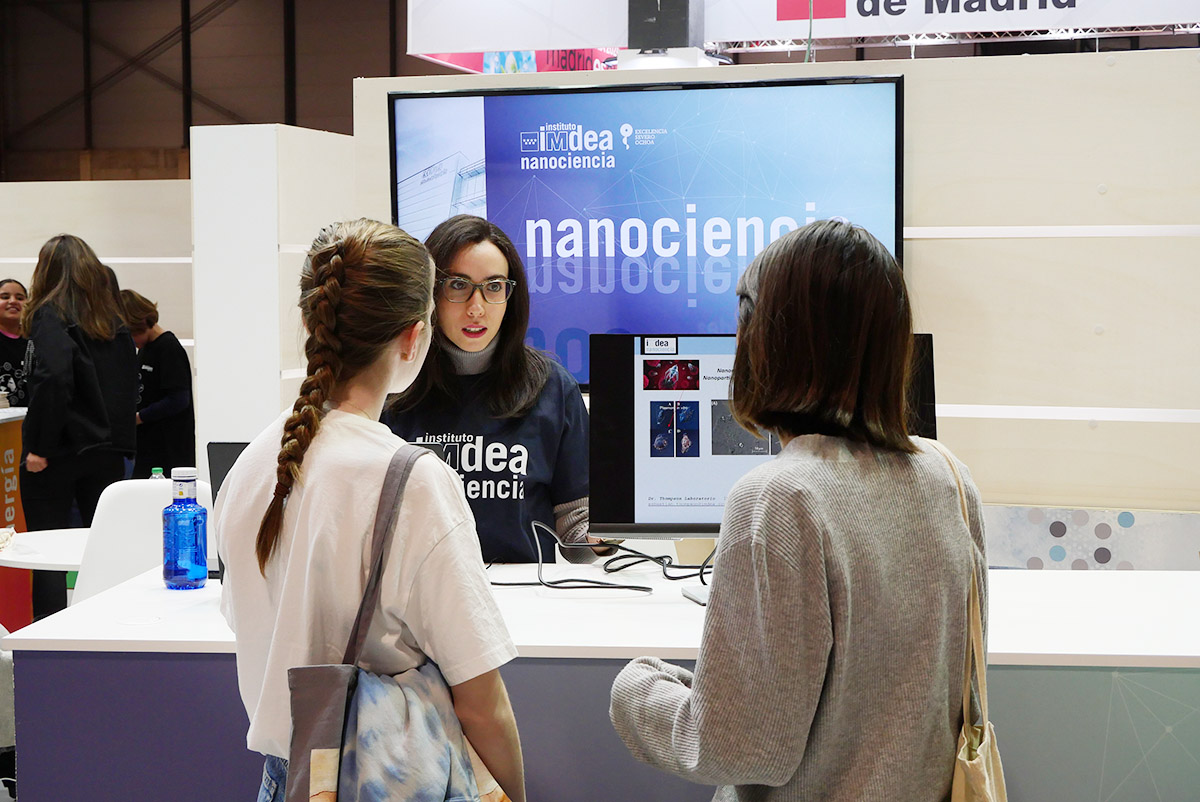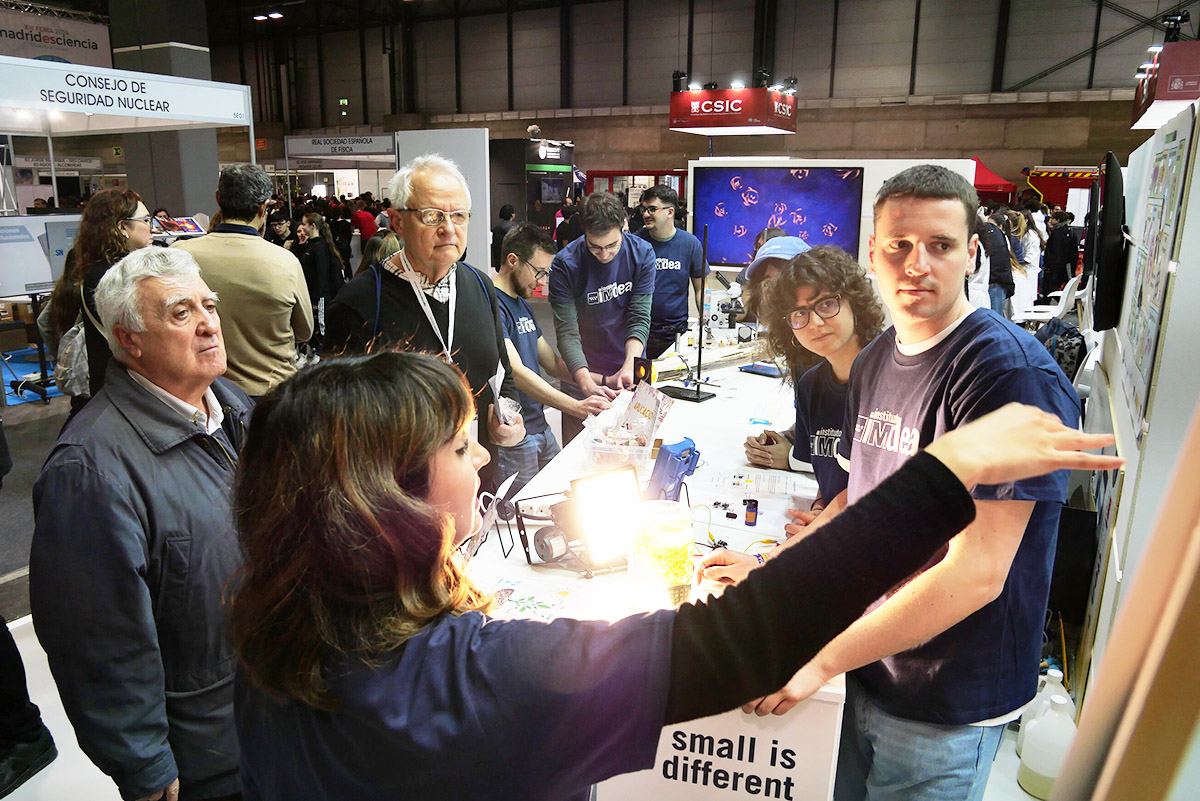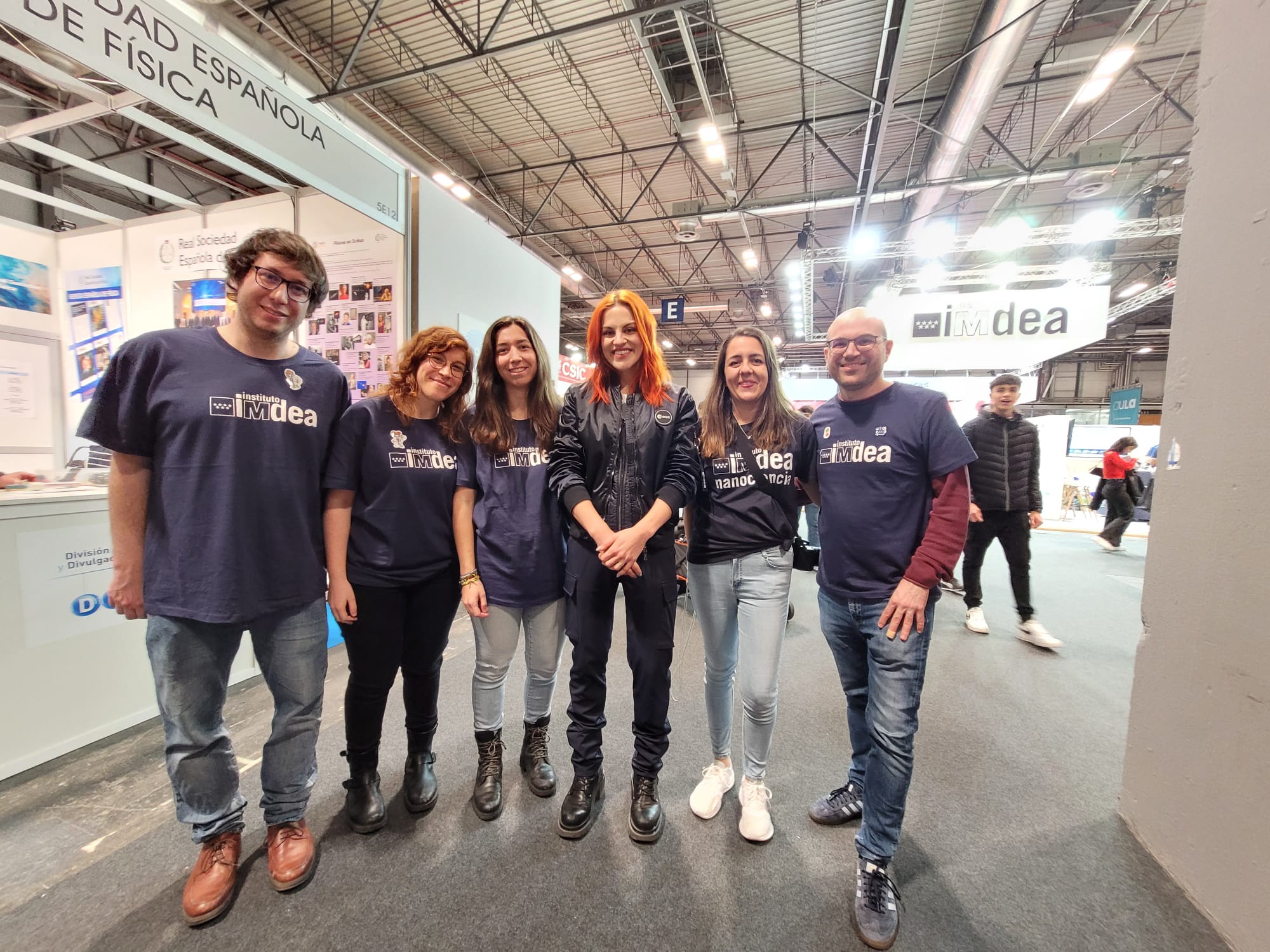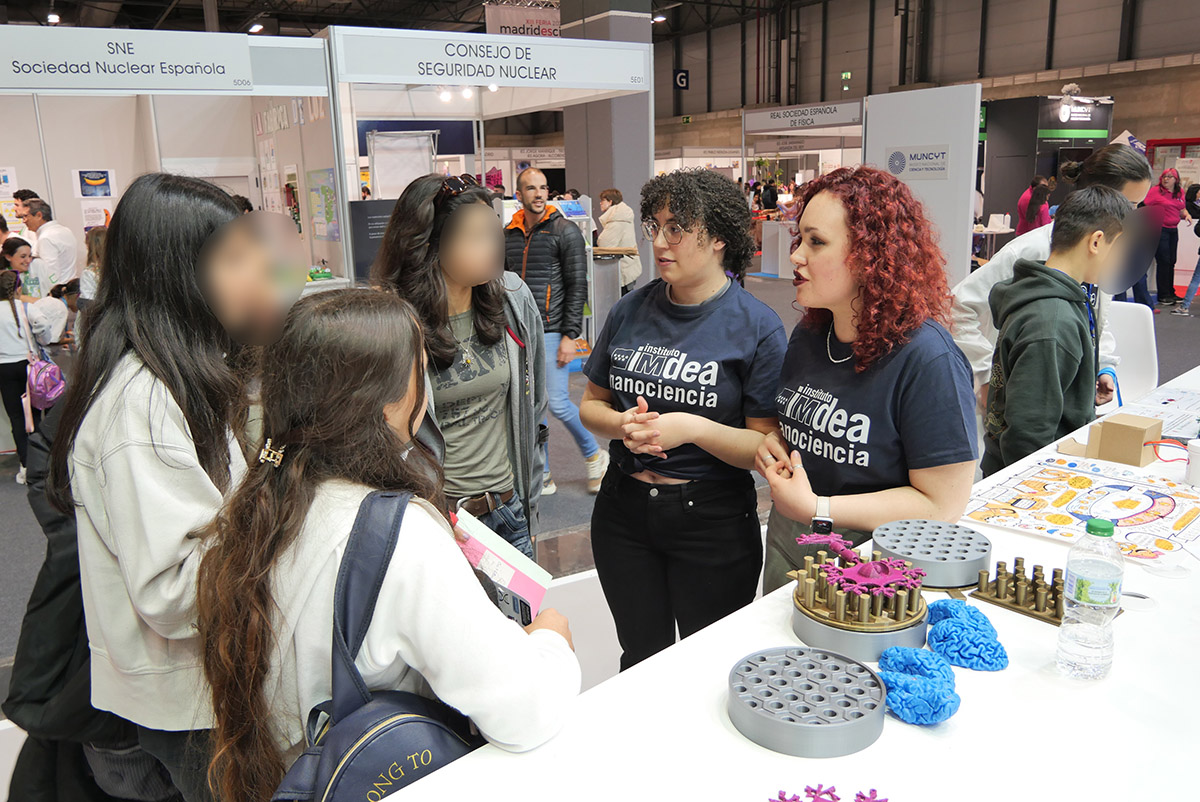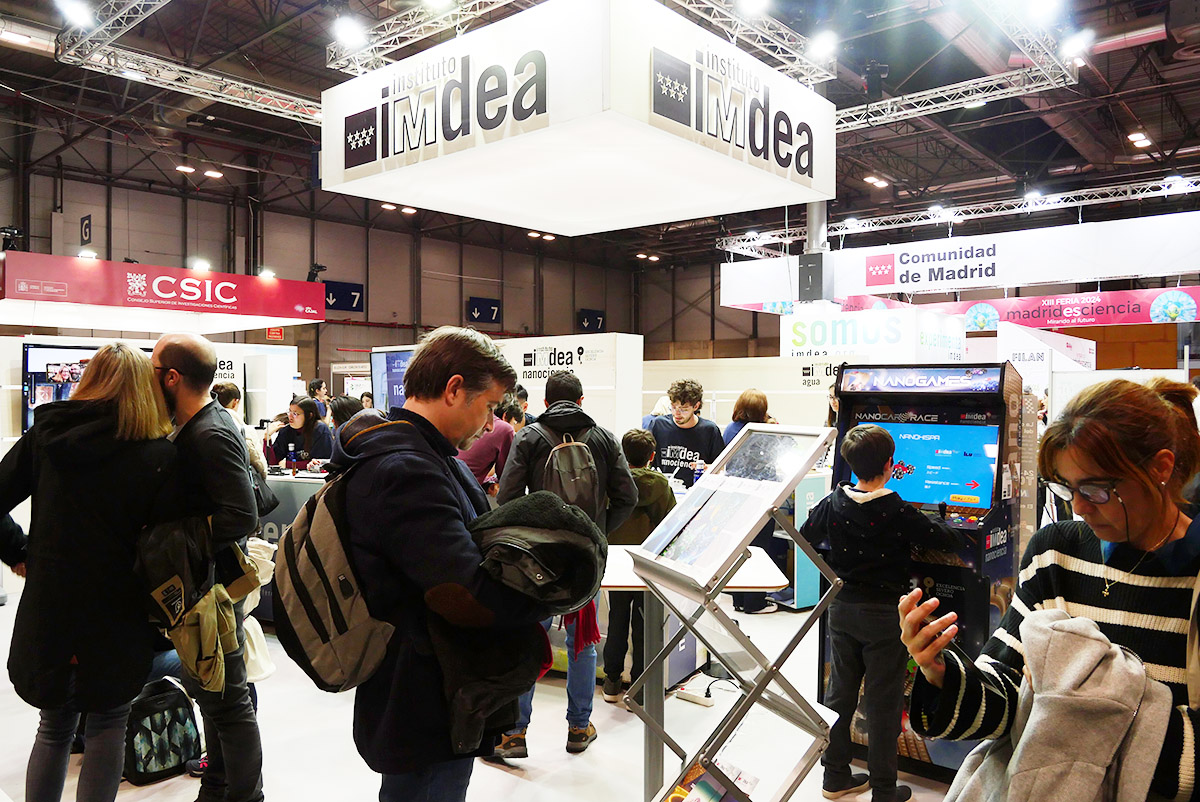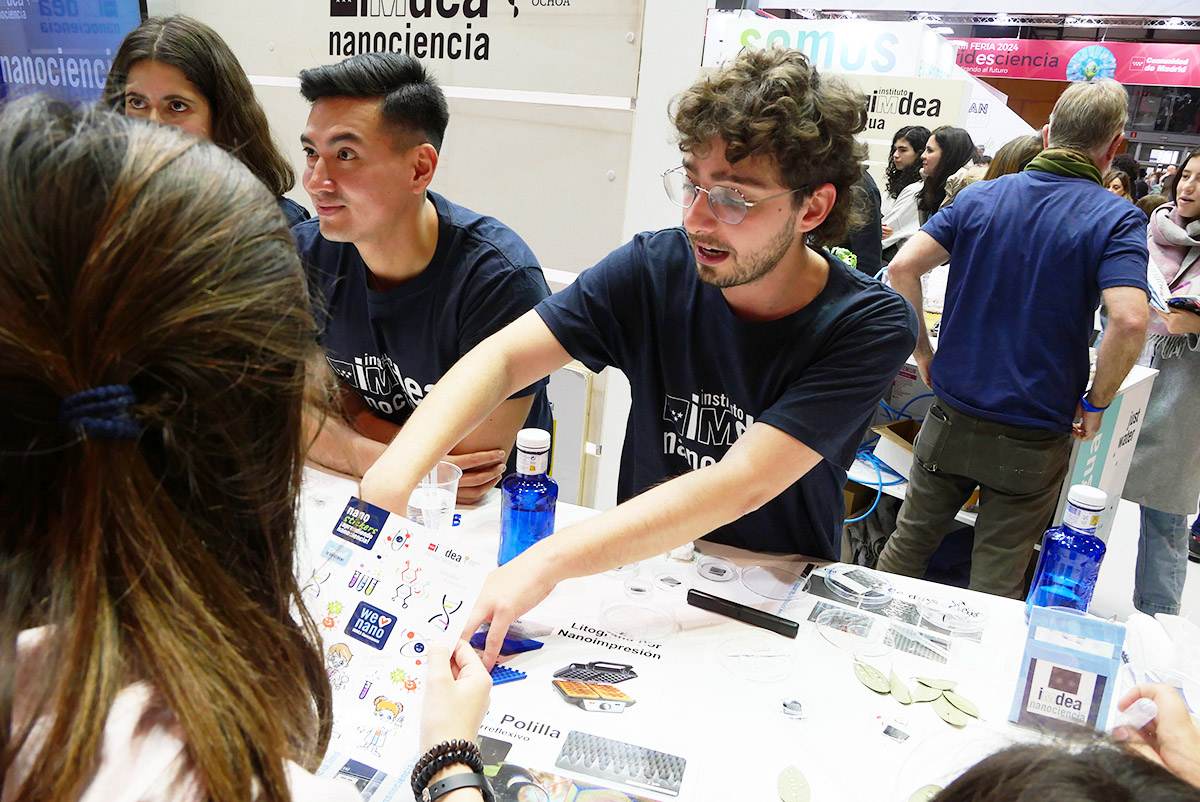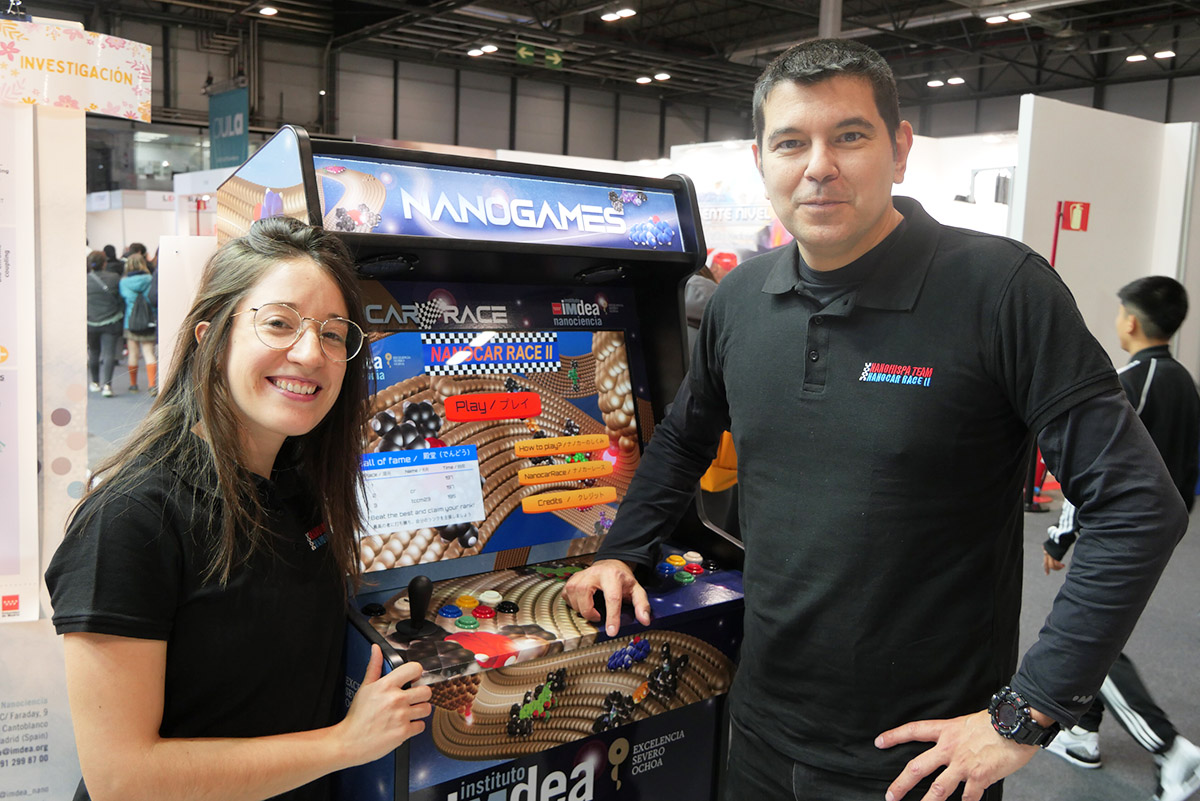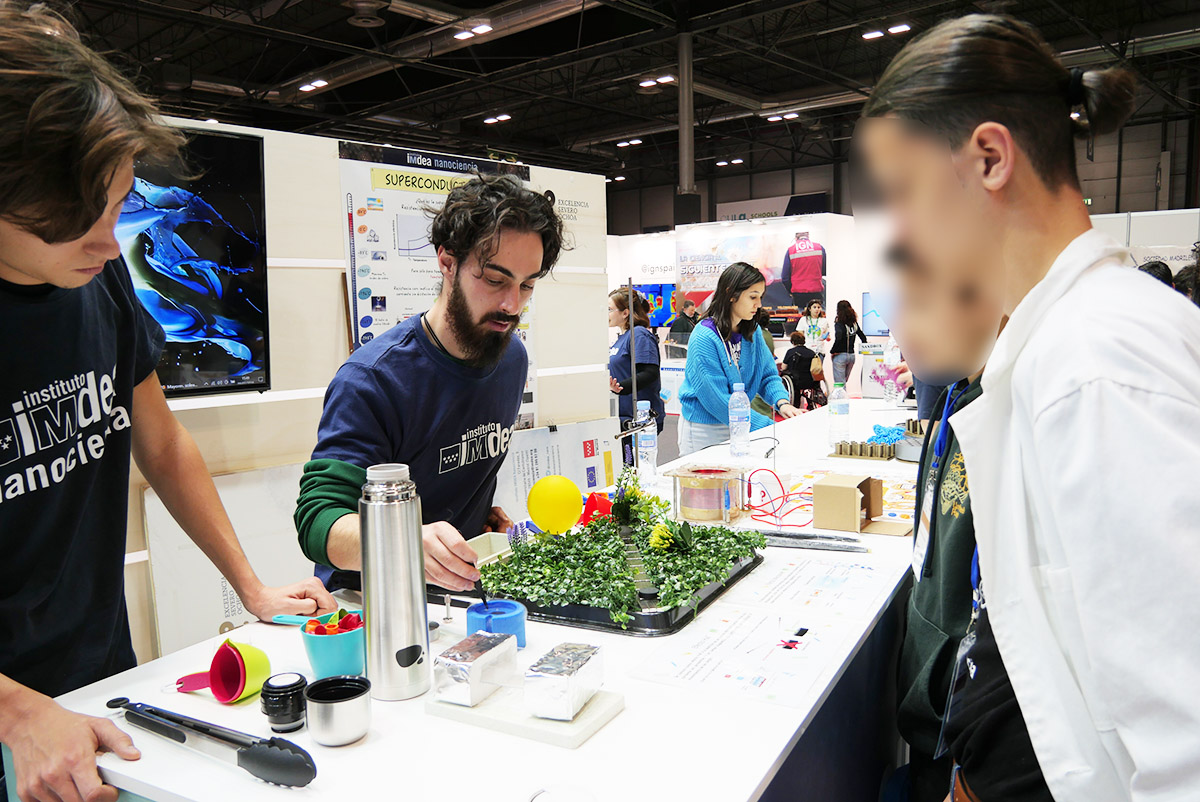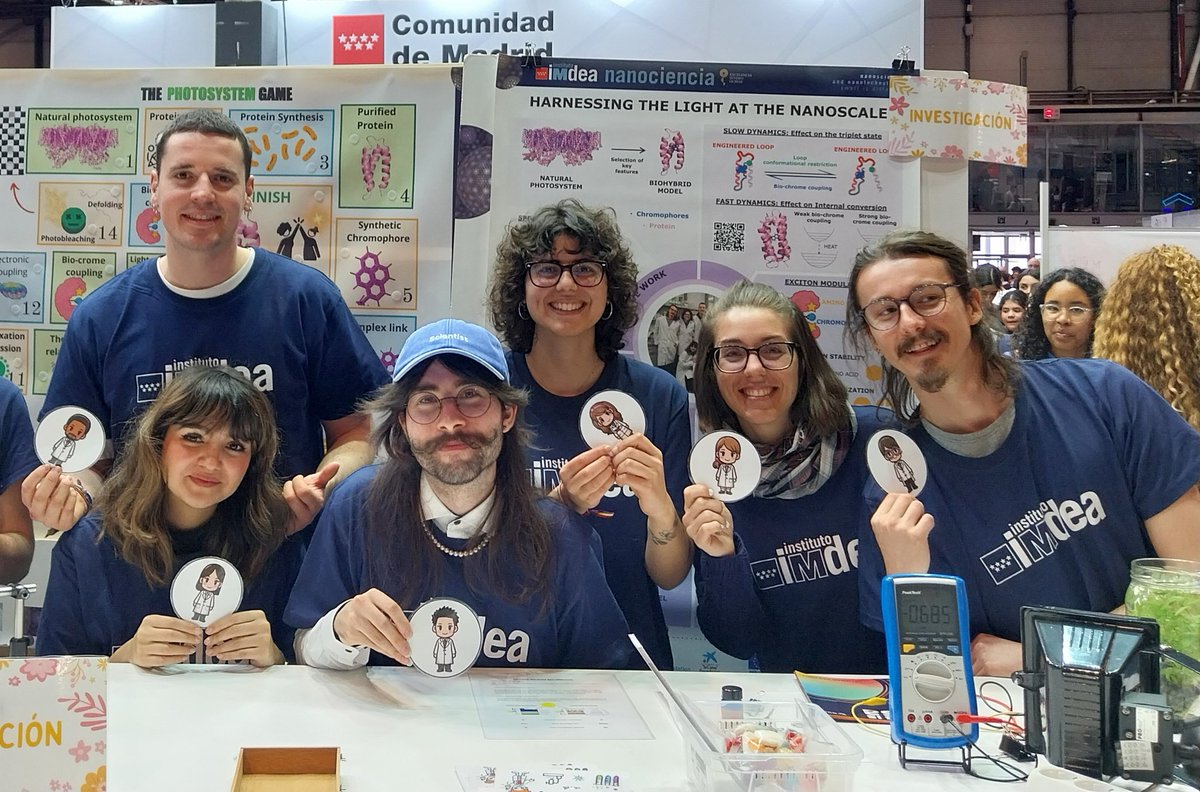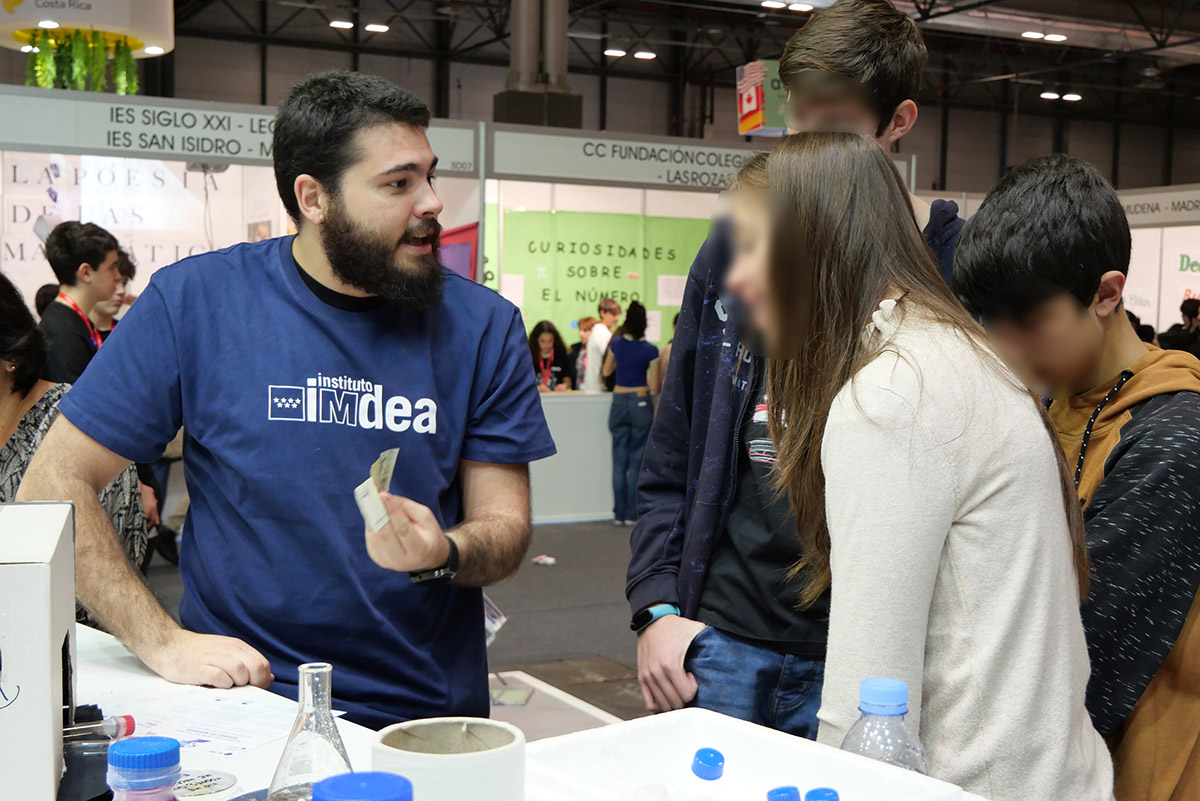IMDEA Nanociencia participates in the Science Fair ‘Madrid es Ciencia’ 2024
19.03.2024
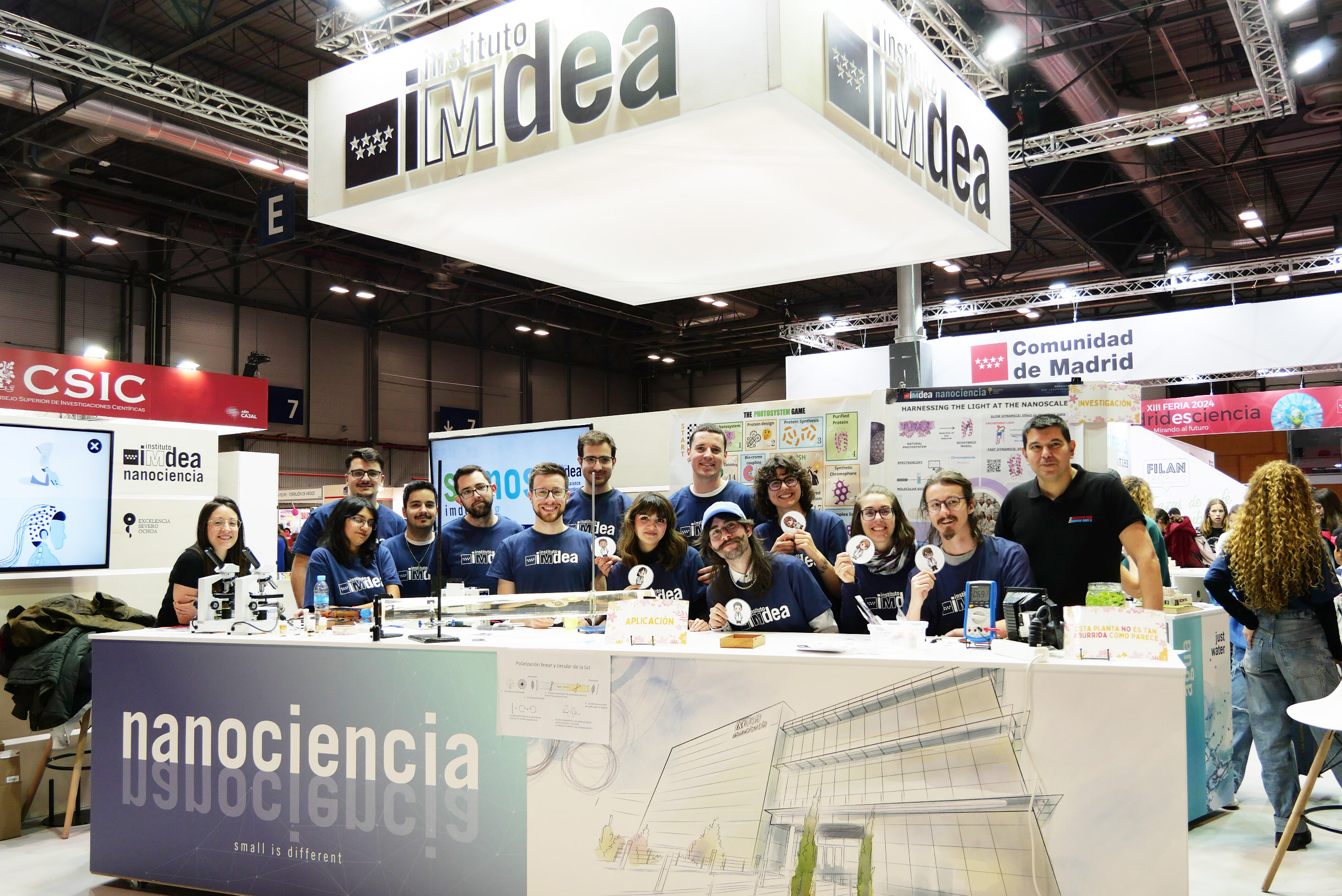
- The researchers of IMDEA Nanociencia showed their research through fun experiments.
- The IMDEA Nanociencia stand was open to the public on 7, 8 and 9 March throughout the day, at the IFEMA exhibition centre.
| Tweet |
Madrid, 19th March, 2024. Publicize our work, disseminate the scientific culture and awaken vocations. These were the main missions of the IMDEA Nanociencia institute during the exhibition that took place at the 'Madrid is Science' fair, the flagship event of scientific dissemination in the region of Comunidad de Madrid. For three full days, from 7 to 9 March 2024, the researchers of IMDEA Nanociencia have shown, through various scientific experiences, the science they do in their laboratories.
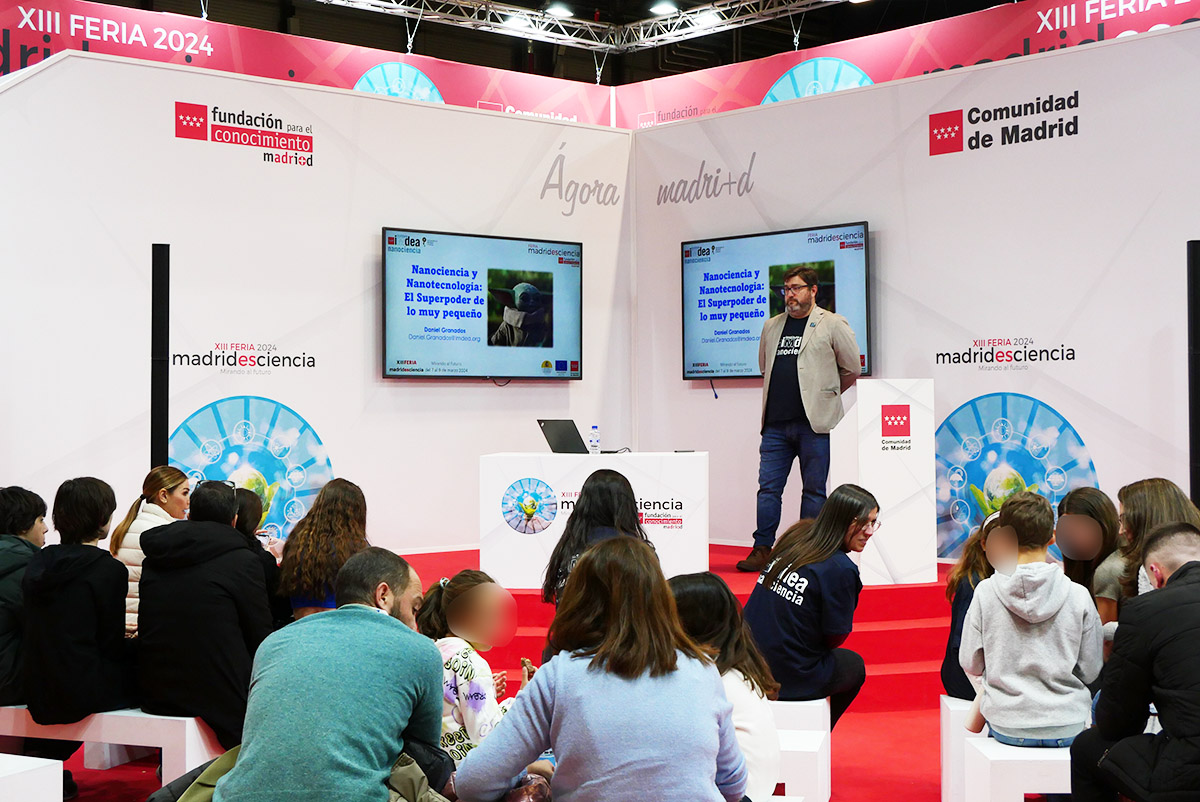 From the IMDEA Nanociencia counter, at the joint stand of IMDEA Institutes, visitors were able to enjoy experiments with light, magnets, or specially designed materials. The Magnetic Nanoparticles Group, led by Gorka Salas, explained the power of magnetic nanoparticles, and showed an example that is always very effective: ferrofluid. The Bioengineered Nanophotonics Group, led by Sara Hernández, has brought a fun game to explain photosynthesis, as well as a plant submerged in water in which oxygen production can be observed. In the afternoon session, the Biosensors in Neuroscience Group, led by Valle Palomo, brought different luminescent solutions that are used in research to mark and learn about biological activity, and carried out luminescent reactions live, under their black box. The Nanostructured Photovoltaics Group, led by Enrique Cánovas, has taken a strobe camera to explain how images of moving electrons are taken.
From the IMDEA Nanociencia counter, at the joint stand of IMDEA Institutes, visitors were able to enjoy experiments with light, magnets, or specially designed materials. The Magnetic Nanoparticles Group, led by Gorka Salas, explained the power of magnetic nanoparticles, and showed an example that is always very effective: ferrofluid. The Bioengineered Nanophotonics Group, led by Sara Hernández, has brought a fun game to explain photosynthesis, as well as a plant submerged in water in which oxygen production can be observed. In the afternoon session, the Biosensors in Neuroscience Group, led by Valle Palomo, brought different luminescent solutions that are used in research to mark and learn about biological activity, and carried out luminescent reactions live, under their black box. The Nanostructured Photovoltaics Group, led by Enrique Cánovas, has taken a strobe camera to explain how images of moving electrons are taken.
During the three days of the fair, boys and girls of different ages have approached the arcade machine to compete in a nanocar race game, and learn how molecules are made to move with a tunneling microscope in the Nanoarchitectures on Surfaces Group, led by David Écija. At the counter, the Switchable Materials Group, led by José Sánchez Costa, showed different chemical reactions and how the chemical elements lanthanides, which are luminescent, are used in, for example, banknotes, to prevent counterfeiting. The interactive poster of the ByAxon project was also present next to the counter, where researchers from the Neural Interfaces Group showed their research through 3D printed models of interfaces and neurons. Perhaps the most spectacular experiment was the superconductivity exhibition of the Quantum Materials Transport Group, led by Mariela Menghini, in which visitors were able to experiment with the effect of magnetic levitation.
In the Agora space of Madri+d, Daniel Granados, researcher and deputy director of IMDEA Nanociencia, gave the talk "Nanoscience: the super-power of the very small". He also talked about quantum materials, their current development, and their impact on the future.
In total, 28 different activities, 7 research groups, and 40 researchers from IMDEA Nanociencia involved in the 'Madrid is Science' fair. In addition to the scientific activities, IMDEA Nanociencia showed on Friday, March 8, its institutional strategy of Gender Equality through pages commemorating the anniversary.
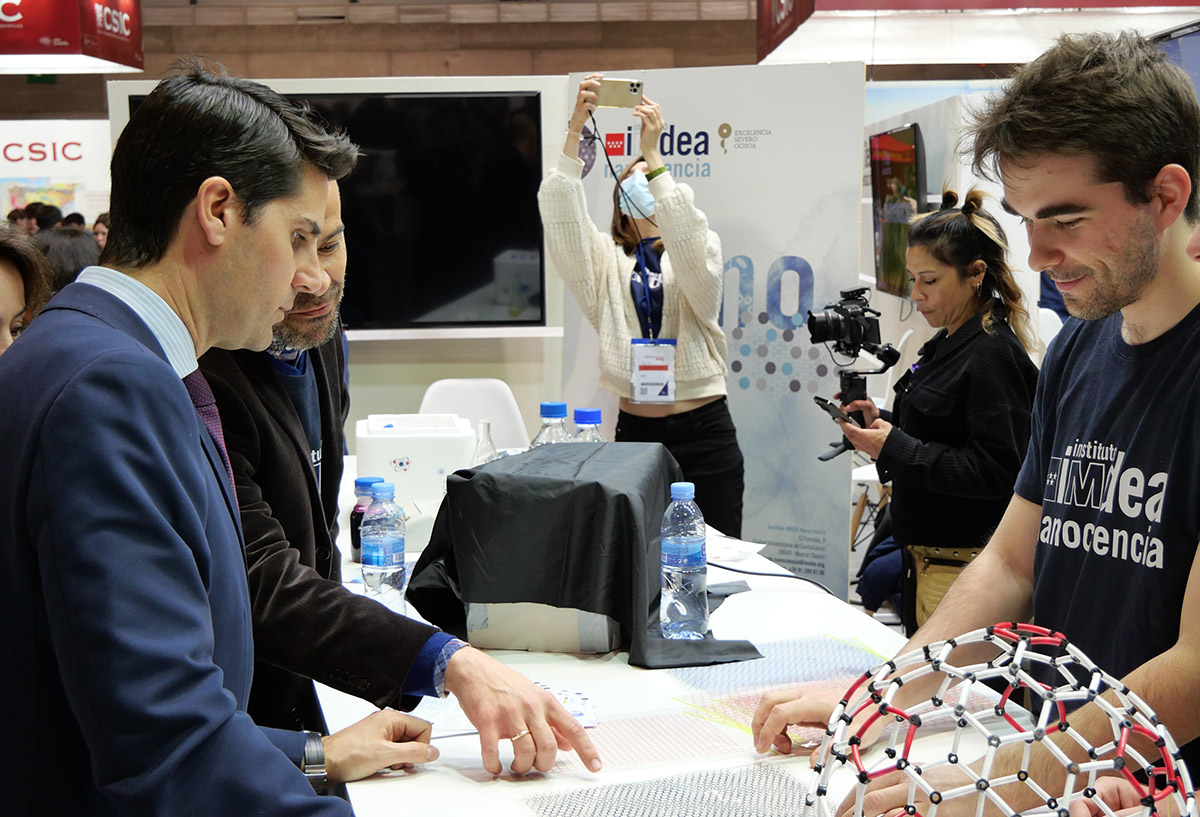 The IMDEA Nanociencia desk was visited by Emilio Viciana, Minister of Education, Science and Universities, and Ana Ramírez, Deputy Minister of Universities, Research and Science of the Community of Madrid, where they were received by Emilio Pérez, researcher and Deputy Director of Strategy, and Ana Pizarro, researcher and Deputy Director of Biosafety. Researchers from the Photoinduced Spectroscopy Group, led by Juan Cabanillas, showed them different light-altering materials and their properties, such as a giant tube of water and sugar that rotates the polarization of light, and which are currently used for technological applications. Also, the Modelling Group, led by Francisco Guinea, showed them, through effective visualizations of geometric patterns, how the properties of materials such as graphene can be altered at the nanoscale.
The IMDEA Nanociencia desk was visited by Emilio Viciana, Minister of Education, Science and Universities, and Ana Ramírez, Deputy Minister of Universities, Research and Science of the Community of Madrid, where they were received by Emilio Pérez, researcher and Deputy Director of Strategy, and Ana Pizarro, researcher and Deputy Director of Biosafety. Researchers from the Photoinduced Spectroscopy Group, led by Juan Cabanillas, showed them different light-altering materials and their properties, such as a giant tube of water and sugar that rotates the polarization of light, and which are currently used for technological applications. Also, the Modelling Group, led by Francisco Guinea, showed them, through effective visualizations of geometric patterns, how the properties of materials such as graphene can be altered at the nanoscale.
In summary, IMDEA Nanociencia showed, once again, how nanotechnology is fully integrated into our lives through applications and increasingly in aspects such as technology, medicine or security, through the study of nanoscience.
The 'Madrid is Science' fair is organised by the Madri+d Foundation of the Comunidad de Madrid at the IFEMA exhibition centre, in conjunction with the AULA Education fair. In this edition of 2024 it has received an estimated number of 21,000 visitors.

More information:
https://nanociencia.imdea.org/es/divulgacion/eventos/feria-madrid-es-ciencia
Contact:
Oficina de Divulgación y Comunicación de IMDEA Nanociencia
divulgacion.nanociencia [at]imdea.org
Twitter: @imdea_nano
Facebook: @imdeananociencia
Instagram: @imdeananociencia
Source: IMDEA Nanociencia.





